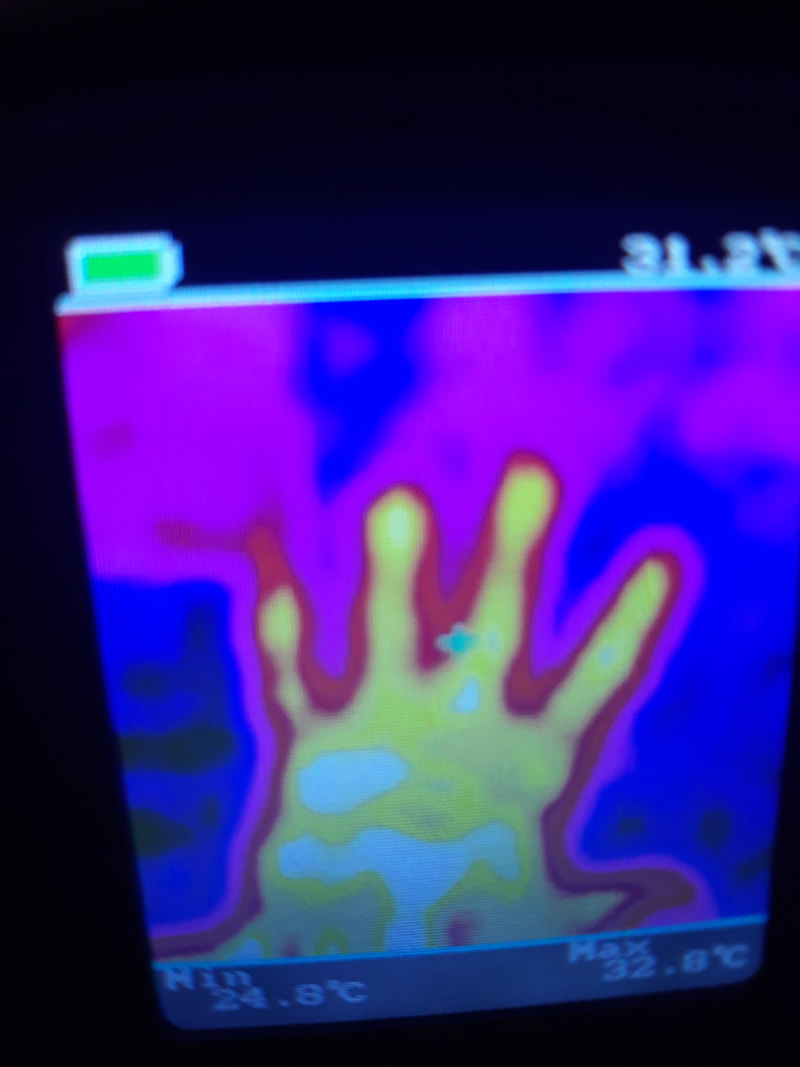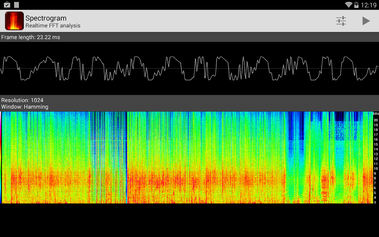تحذير Waarskuwing সতর্কীকরণ Upozorenje Предупреждение 警告 Advertència 警告 Advarsel Waarschuwing Hoiatus ivakasala babala Varoitus alerte warnung Προειδοποίηση Avetisman אזהרה चेतावनी ceeb toom Figyelmeztetés Viðvörun Peringatan avviso Onyo 경고 Brīdinājums Įspėjimas fampitandremana Amaran Twissija Advarsel هشدار Ostrzeżenie Avertizare lapataiga Упозорење Opozorilo Advertencia Varning Faaararaa எச்சரிக்கை హెచ్చరిక คำ เตือน fakatokanga Uyarı تنبیہ Cảnh báo Rhybudd Warning!!!
WARNING THIS WEBSITE MAY CONTAIN GRAPHIC AUDIO & VIDEO CONTENT OF A MATURE NATURE INCLUDING BUT NOT LIMITED TO DEMONS, GHOSTS, MURDER, AND DEATH VIEWER DISCRETION IS STRONGLY ADVISED!
PERSONS UNDER THE AGE OF 21 OR SUFFERING FROM HEALTH/MENTAL CONDITIONS SHOULD EXIT NOW!
PERSONS UNDER THE AGE OF 21 OR SUFFERING FROM HEALTH/MENTAL CONDITIONS SHOULD EXIT NOW!
$200.00 USD Free! $200.00 USD Free! Paranormal Activity Reward!
"A.S.K. PARANORMAL RESEARCH DEVELOPMENT CENTER/GROUP"
Do you have paranormal activity?
If so $200.00 USD cash can be yours, if you meet the following criteria....
#1. You allow my team and I to investigate your person and or your property, and collect undebunkable video and or audio that we're satisfied with.
#2. After the investigation, you allow my team and I to conduct a video interview with you for approximately 15 minutes that we're satisfied with.
#3. The final step is, we need you to sign a video release form, and when you have it signed and dated to our satisfaction, I'll hand you $200.00 USD cash money in exchange for the signed document.
That's all! Sit back, let us do our thing, and get paid!!!
Fine print-
Before we investigate, my team and I will sign a waiver of liability, and give it to you for your protection.
If the video and or audio is of such high caliber that you feel is worth more than the $200.00 USD, you have the right to refuse the dollar amount, and try to renegotiate of course. Also we have the right to refuse said renegotiations, and if the evidence collected if any is of poor quality in our opinion, or if we've been hoaxed in any way we will consider the deal null and void.
Any person wishing to have us investigate must be at least 18 years of age, and be the rightful owner/guardian or operator of said property or person(s) involved. Other persons wishing to be part of the investigation video will also be required to sign a video release, but will not receive payment what so ever from us. We will try to get to any and all claims as soon as possible at our convenience and yours at our discretion. If at anytime you wish to terminate the said investigation or if we deem fit to also do so, no hard feelings, we'll leave without any issues or complaints, you'll even receive a "special gift" from us for your time.
Contact me direct @
702 496 0451 between the hours of 9AM-5PM 7 Days a week and just say, "Sonny, I have paranormal activity", and I'll walk you through this simple and easy process, thank you. (We are a non profit organization)
**In addition to investigations, we're also interested in any objects that might have paranormal significance for substantial compensation**
"A.S.K. PARANORMAL RESEARCH DEVELOPMENT CENTER/GROUP"
Do you have paranormal activity?
If so $200.00 USD cash can be yours, if you meet the following criteria....
#1. You allow my team and I to investigate your person and or your property, and collect undebunkable video and or audio that we're satisfied with.
#2. After the investigation, you allow my team and I to conduct a video interview with you for approximately 15 minutes that we're satisfied with.
#3. The final step is, we need you to sign a video release form, and when you have it signed and dated to our satisfaction, I'll hand you $200.00 USD cash money in exchange for the signed document.
That's all! Sit back, let us do our thing, and get paid!!!
Fine print-
Before we investigate, my team and I will sign a waiver of liability, and give it to you for your protection.
If the video and or audio is of such high caliber that you feel is worth more than the $200.00 USD, you have the right to refuse the dollar amount, and try to renegotiate of course. Also we have the right to refuse said renegotiations, and if the evidence collected if any is of poor quality in our opinion, or if we've been hoaxed in any way we will consider the deal null and void.
Any person wishing to have us investigate must be at least 18 years of age, and be the rightful owner/guardian or operator of said property or person(s) involved. Other persons wishing to be part of the investigation video will also be required to sign a video release, but will not receive payment what so ever from us. We will try to get to any and all claims as soon as possible at our convenience and yours at our discretion. If at anytime you wish to terminate the said investigation or if we deem fit to also do so, no hard feelings, we'll leave without any issues or complaints, you'll even receive a "special gift" from us for your time.
Contact me direct @
702 496 0451 between the hours of 9AM-5PM 7 Days a week and just say, "Sonny, I have paranormal activity", and I'll walk you through this simple and easy process, thank you. (We are a non profit organization)
**In addition to investigations, we're also interested in any objects that might have paranormal significance for substantial compensation**
A.lexander
&
S.onny
K.aminski's
A.S.K. Paranormal Research Development Center/Group
Providing the utmost professional & discreet service possible. PRDC's group of paranormal investigators utilize the most high tech equipment, and techniques
formulated by PRDC's founder and president Dr. Sonny Kaminski.
Sonny Kaminski, Ph.D. has studied numerous years, and received multiple certificates, diplomas, and degrees from various organizations in "Parapsychology",
"Demonology", "Paranormal Science", and "Anomalous Research". Dr. Sonny Kaminski, received his Ph.D.'s from IMHS & ICMH in "Metaphysics" &
"Parapsychology" from Dr. Doug Kelley, the president of IMHS & ICMH.
Dr. Sonny Kaminski, received an "Honorary Doctorate" in "Demonology" from Bishop James Long, who is the president of "Paranormal Clergy Institute" & The U.S.O.C.C. for his knowledge, work, and contributions to the field of study of "Paranormal Studies".
Dr. Sonny Kaminski is a member of "The International Alliance of Holistic Therapists". Doctor Sonny Kaminski, is well known, and respected in the paranormal community, locally, and abroad.
If you have any questions regarding anything paranormal, please feel free to call 7 days a week 9AM-5PM PST at (702) 496-0451
Thank you, and have a blessed day.
&
S.onny
K.aminski's
A.S.K. Paranormal Research Development Center/Group
Providing the utmost professional & discreet service possible. PRDC's group of paranormal investigators utilize the most high tech equipment, and techniques
formulated by PRDC's founder and president Dr. Sonny Kaminski.
Sonny Kaminski, Ph.D. has studied numerous years, and received multiple certificates, diplomas, and degrees from various organizations in "Parapsychology",
"Demonology", "Paranormal Science", and "Anomalous Research". Dr. Sonny Kaminski, received his Ph.D.'s from IMHS & ICMH in "Metaphysics" &
"Parapsychology" from Dr. Doug Kelley, the president of IMHS & ICMH.
Dr. Sonny Kaminski, received an "Honorary Doctorate" in "Demonology" from Bishop James Long, who is the president of "Paranormal Clergy Institute" & The U.S.O.C.C. for his knowledge, work, and contributions to the field of study of "Paranormal Studies".
Dr. Sonny Kaminski is a member of "The International Alliance of Holistic Therapists". Doctor Sonny Kaminski, is well known, and respected in the paranormal community, locally, and abroad.
If you have any questions regarding anything paranormal, please feel free to call 7 days a week 9AM-5PM PST at (702) 496-0451
Thank you, and have a blessed day.
Sonny Kaminski, Ph.D.
~DEMONS/DEMONOIC POSSESSION~Below, is a list of signs formulated by the catholic church that your home may be infested by the demonic. If you encounter any, or all of these signs, call us to come and investigate further. If we can confirm what you're experiencing is genuine, we can call in experts in the field, such as clergy. Be advised that some demonics, or even the non-demonic will hide, or lay low when an outside entity like paranormal investigators or clergy visit, because we pose a threat. So if this is the case, try to document the incidents on video and audio to show. You can always contact clergy direct, such as U.S.O.C.C., or other catholic churches, they have exorcists that still conduct the ritual, as far as I know.
#1. Unexplainable foul odors that appear from nowhere and the source cannot be found.
#2. If you hear knocking or banging on the walls and the source cannot be found - bangings will often come in 3's - as a mocking of the Trinity. #3.Banging noises in the walls can be Poltergeist activity and this should not be confused with Demonic. #4. Pay very close to how animals in the home react - are they frightened and alarmed at something you cannot see but hear? #5. Many people have claimed to have seen dark shadowy figures but this can also be human entities as well. #6. There will be an overwhelming oppressive feeling - people feeling sick to their stomach while going to the infested room. Keep in mind that this could also be electro currents causing havic as well.
#7. You begin to get a sense of dread and your 6th sense tells you that something is not right. #8. Heavy objects will move by themselves and these objects usually have a target - you or guests. #9. Religious articles are destroyed or they may completely disappear and pay attention to any. #10. Growling noises that can be clearly heard but the source cannot be verified. #11. Paranormal Activiy usually begins when prayers are said. https://youtu.be/kBOkqr9r1qQ
DemonFrom Wikipedia, the free encyclopedia Jump to navigationJump to search Paranormal, often malevolent being prevalent in religion, occultism, mythology, and folklore This article is about conceptions of evil spirits from around the world. For the semi-divine beings in classical mythology, see Daemon (classical mythology). For other uses, see Demon (disambiguation). "Evil spirit" redirects here. For the 1928 film, see Evil Spirit (film). For the album by The Damned, see Evil Spirits (album). Bronze statuette of the Assyro-Babylonian demon king Pazuzu, circa 800 BC – circa 700 BC, Louvre Mephistopheles (A Medieval demon from German folklore) flying over Wittenberg, in a lithograph by Eugène Delacroix.A demon is a supernatural and often malevolent being prevalent historically in religion, occultism, literature, fiction, mythology, and folklore; as well as in media such as comics, videogames, movies and television series. The original Greek word daimon does not carry negative connotations.[1] The Ancient Greek word δαίμων daimōn denotes a spirit or divine power, much like the Latin genius or numen.[2] The Greek conception of a daimōn notably appears in the works of Plato, where it describes the divine inspiration of Socrates. In Ancient Near Eastern religions and in the Abrahamic traditions, including ancient and medieval Christian demonology, a demon is considered a harmful spiritual entity which may cause demonic possession, calling for an exorcism. In Western occultism and Renaissance magic, which grew out of an amalgamation of Greco-Roman magic, Jewish Aggadah and Christian demonology,[3] a demon is believed to be a spiritual entity that may be conjured and controlled. Contents
Buer, the 10th spirit, who teaches "Moral and Natural Philosophy" (illustration by Louis Breton from Dictionnaire Infernal).The Ancient Greek word δαίμων daemon denotes a spirit or divine power, much like the Latin genius or numen. Daimōn most likely came from the Greek verb daiesthai (to divide, distribute).[2] The Greek conception of a daimōn notably appears in the works of Plato, where it describes the divine inspiration of Socrates. The original Greek word daimon does not carry the negative connotation initially understood by implementation of the Koine δαιμόνιον (daimonion),[1] and later ascribed to any cognate words sharing the root. The Greek terms do not have any connotations of evil or malevolence. In fact, εὐδαιμονία eudaimonia, (literally good-spiritedness) means happiness. By the early Roman Empire, cult statues were seen, by pagans and their Christian neighbors alike, as inhabited by the numinous presence of the gods: "Like pagans, Christians still sensed and saw the gods and their power, and as something, they had to assume, lay behind it, by an easy traditional shift of opinion they turned these pagan daimones into malevolent 'demons', the troupe of Satan..... Far into the Byzantine period Christians eyed their cities' old pagan statuary as a seat of the demons' presence. It was no longer beautiful, it was infested."[4] The term had first acquired its negative connotations in the Septuagint translation of the Hebrew Bible into Greek, which drew on the mythology of ancient Semitic religions. This was then inherited by the Koine text of the New Testament. The Western medieval and neo-medieval conception of a demon[5] derives seamlessly from the ambient popular culture of Late Antiquity. The Hellenistic "daemon" eventually came to include many Semitic and Near Eastern gods as evaluated by Christianity.[citation needed] The supposed existence of demons remains an important concept in many modern religions and occultist traditions. Demons are still feared largely due to their alleged power to possess living creatures. In the contemporary Western occultist tradition (perhaps epitomized by the work of Aleister Crowley), a demon (such as Choronzon, which is Crowley's interpretation of the so-called 'Demon of the Abyss') is a useful metaphor for certain inner psychological processes (inner demons), though some may also regard it as an objectively real phenomenon. Some scholars[6] believe that large portions of the demonology (see Asmodai) of Judaism, a key influence on Christianity and Islam, originated from a later form of Zoroastrianism, and were transferred to Judaism during the Persian era. Ancient Egypt[edit] Ram-headed demon. The hands probably outstretch to hold two snakes. From a royal tomb in the Valley of the Kings, Thebes, Egypt. End of the 18th Dynasty, around 1325 BCBoth deities and demons can act as intermediaries to deliver messages to humans.[7] Thus they share some resemblance to the Greek daimonion. The exact definition of "demon" in Egyptology posed a major problem for modern scholarship, since the borders between a deity and a demon are sometimes blurred and the ancient Egyptian language lacks a term for the modern English "demon".[8][9] However, magical writings indicate that ancient Egyptians acknowledged the existence of malevolent demons by highlighting the demon names with red ink.[9] Demons in this culture appeared to be subordinative and related to a specific deity, yet they may have occasionally acted independent from the divine will. The existence of demons can be related to the realm of chaos, beyond the created world.[8] But even this negative connotation cannot be denied in light of the magical texts. The role of demons in relation to the human world remains ambivalent and largely depends on context. Ancient Egyptian demons can be divided into two classes: "guardians" and "wanderers."[10][11] "Guardians" are tied to a specific place; their demonic activity is topographically defined and their function can be benevolent towards those who have the secret knowledge to face them.[12] Demons protecting the underworld may prevent human souls from entering paradise. Only by knowing right charms is the deceased able to enter the Halls of Osiris.[13] Here, the aggressive nature of the guardian demons is motivated by the need to protect their abodes and not by their evil essence. Accordingly, demons guarded sacred places or the gates to the netherworld. During the Ptolemaic and Roman period, the guardians shifted towards the role of Genius loci and they were the focus of local and private cults. The "wanderers" are associated with possession, mental illness, death and plagues. Many of them serve as executioners for the major deities, such as Ra or Osiris, when ordered to punish humans on earth or in the netherworld.[12] Wanderers can also be agents of chaos, arising from the world beyond creation to bring about misfortune and suffering without any divine instructions, led only by evil motivations. The influences of the wanderers can be warded off and kept at the borders on the human world by the use of magic, but they can never be destroyed. A sub-category of "wanderers" are nightmare demons, which were believed to cause nightmares by entering a human body.[8] Mesopotamia[edit]Further information: Ancient Mesopotamian underworld § Demons Ancient Sumerian cylinder seal impression showing the god Dumuzid being tortured in the Underworld by galla demonsAccording to the Jewish Encyclopedia, "In Chaldean mythology the seven evil deities were known as shedu, storm-demons, represented in ox-like form."[14] They were represented as winged bulls, derived from the colossal bulls used as protective jinn of royal palaces.[15] From Chaldea, the term shedu traveled to the Israelites. The writers of the Tanach applied the word as a dialogism to Canaanite deities. There are indications that demons in popular Hebrew mythology were believed to come from the nether world.[16] Various diseases and ailments were ascribed to them, particularly those affecting the brain and those of internal nature. Examples include catalepsy, headache, epilepsy and nightmares. There also existed a demon of blindness, "Shabriri" (lit. "dazzling glare") who rested on uncovered water at night and blinded those who drank from it.[17] Demons supposedly entered the body and caused the disease while overwhelming or "seizing" the victim. To cure such diseases, it was necessary to draw out the evil demons by certain incantations and talismanic performances, at which the Essenes excelled.[14] Josephus, who spoke of demons as "spirits of the wicked which enter into men that are alive and kill them", but which could be driven out by a certain root,[18] witnessed such a performance in the presence of the Emperor Vespasian[19] and ascribed its origin to King Solomon. In mythology, there were few defences against Babylonian demons. The mythical mace Sharur had the power to slay demons such as Asag, a legendary gallu or edimmu of hideous strength. Abrahamic religions[edit]Judaism[edit]See also: Shedim, Dybbuk, and Samael In Lilith by John Collier (1892), the female demon Lilith is shown personified within the Garden of EdenAs referring to the existence or non-existence of demons (shedim or Se'irim) there are converse opinions in Judaism.[14] There are "practically nil" roles assigned to demons in the Hebrew Bible.[20] In Judaism today, beliefs in "demons" or "evil spirits" are either midot hasidut (Hebr. for "customs of the pious"), and therefore not halachah, or notions based on a superstition that are non-essential, non-binding parts of Judaism, and therefore not normative Jewish practice. That is to say, Jews are not obligated to believe in the existence of shedim, as posek rabbi David Bar-Hayim points out.[21] Tanakh[edit]The Tanakh mentions two classes of demonic spirits, the se'irim and the shedim. The word shedim appears in two places in the Tanakh (Psalm 106:37, Deuteronomy 32:17). The se'irim are mentioned once in Leviticus 17:7,[22] probably a re-calling of Assyrian demons in shape of goats.[23] The shedim in return are not pagan demigods, but the foreign gods themselves. Both entities appear in a scriptural context of animal or child sacrifice to "non-existent" false gods.[14][20][24] Talmudic tradition[edit] See also: Talmud and Jerusalem TalmudIn the Jerusalem Talmud notions of shedim ("demons" or "spirits") are almost unknown or occur only very rarely, whereas in the Babylon Talmud there are many references to shedim and magical incantations. The existence of shedim in general was not questioned by most of the Babylonian Talmudists. As a consequence of the rise of influence of the Babylonian Talmud over that of the Jerusalem Talmud, late rabbis in general took as fact the existence of shedim, nor did most of the medieval thinkers question their reality. However, rationalists like Maimonides, Saadia Gaon and Abraham ibn Ezra and others explicitly denied their existence, and completely rejected concepts of demons, evil spirits, negative spiritual influences, attaching and possessing spirits. Their point of view eventually became mainstream Jewish understanding.[14][25] Kabbalah[edit] See also: Kabbalah, Destroying angel (Bible), and AsmodeusIn Kabbalah demons are regarded a necessary part of the divine emanation in the material world and a byproduct of human sin (Qliphoth).[26] However spirits such as the shedim may also be benevolent and were used in kabbalistic ceremonies (as with the golem of Rabbi Yehuda Loevy) and malevolent shedim (Mazikin, from the root meaning "to damage") were often credited with possession.[27] Aggadah[edit] See also: Aggadah and Angels in JudaismAggadic tales from the Persian tradition describe the shedim, the mazziḳim ("harmers"), and the ruḥin ("spirits"). There were also lilin ("night spirits"), ṭelane ("shade", or "evening spirits"), ṭiharire ("midday spirits"), and ẓafrire ("morning spirits"), as well as the "demons that bring famine" and "such as cause storm and earthquake".[28][14] According to some aggadic stories, demons were under the dominion of a king or chief, either Asmodai[29] or, in the older Aggadah, Samael ("the angel of death"), who killed via poison. Stories in the fashion of this kind of folklore never became an essential feature of Jewish theology.[25] Although occasionally an angel is called satan in the Babylon Talmud, this does not refer to a demon: "Stand not in the way of an ox when coming from the pasture, for Satan dances between his horns".[30] Second Temple period texts[edit] See also: Apotropaic magic and Angels in JudaismTo the Qumran community during the Second Temple period this apotropaic prayer was assigned, stating: "And, I the Sage, declare the grandeur of his radiance in order to frighten and terri[fy] all the spirits of the ravaging angels and the bastard spirits, demons, Liliths, owls" (Dead Sea Scrolls, "Songs of the Sage," Lines 4–5).[31][32] In the Dead Sea Scrolls, there exists a fragment entitled "Curses of Belial" (Curses of Belial (Dead Sea Scrolls, 394, 4Q286(4Q287, fr. 6)=4QBerakhot)). This fragment holds much rich language that reflects the sentiment shared between the Qumran towards Belial. In many ways this text shows how these people thought Belial influenced sin through the way they address him and speak of him. By addressing "Belial and all his guilty lot," (4Q286:2) they make it clear that he is not only impious, but also guilty of sins. Informing this state of uncleanliness are both his "hostile" and "wicked design" (4Q286:3,4). Through this design, Belial poisons the thoughts of those who are not necessarily sinners. Thus a dualism is born from those inclined to be wicked and those who aren't.[33] It is clear that Belial directly influences sin by the mention of "abominable plots" and "guilty inclination" (4Q286:8,9). These are both mechanisms by which Belial advances his evil agenda that the Qumran have exposed and are calling upon God to protect them from. There is a deep sense of fear that Belial will "establish in their heart their evil devices" (4Q286:11,12). This sense of fear is the stimulus for this prayer in the first place. Without the worry and potential of falling victim to Belial's demonic sway, the Qumran people would never feel impelled to craft a curse. This very fact illuminates the power Belial was believed to hold over mortals, and the fact that sin proved to be a temptation that must stem from an impure origin. In Jubilees 1:20, Belial's appearance continues to support the notion that sin is a direct product of his influence. Moreover, Belial's presence acts as a placeholder for all negative influences or those that would potentially interfere with God's will and a pious existence. Similarly to the "gentiles ... [who] cause them to sin against you" (Jubilees 1:19), Belial is associated with a force that drives one away from God. Coupled in this plea for protection against foreign rule, in this case the Egyptians, is a plea for protection from "the spirit of Belial" (Jubilees 1:19). Belial's tendency is to "ensnare [you] from every path of righteousness" (Jubilees 1:19). This phrase is intentionally vague, allowing room for interpretation. Everyone, in one way or another, finds themselves straying from the path of righteousness and by pawning this transgression off on Belial, he becomes a scapegoat for all misguidance, no matter what the cause. By associating Belial with all sorts of misfortune and negative external influence, the Qumran people are henceforth allowed to be let off for the sins they commit. Belial's presence is found throughout the War Scrolls, located in the Dead Sea Scrolls, and is established as the force occupying the opposite end of the spectrum of God. In Col. I, verse 1, the very first line of the document, it is stated that "the first attack of the Sons of Light shall be undertaken against the forces of the Sons of Darkness, the army of Belial" (1Q33;1:1).[34] This dichotomy sheds light on the negative connotations that Belial held at the time.[35] Where God and his Sons of Light are forces that protect and promote piety, Belial and his Sons of Darkness cater to the opposite, instilling the desire to sin and encouraging destruction. This opposition is only reinforced later in the document; it continues to read that the "holy ones" will "strike a blow at wickedness", ultimately resulting in the "annihilation of the Sons of Darkness" (1Q33:1:13). This epic battle between good and evil described in such abstract terms, however it is also applicable to everyday life and serves as a lens through which the Qumran see the world. Every day is the Sons of Light battle evil and call upon God to help them overcome evil in ways small and large. Belial's influence is not taken lightly. In Col. XI, verse 8, the text depicts God conquering the "hordes of Belial" (1Q33;11:8). This defeat is indicative of God's power over Belial and his forces of temptation. However the fact that Belial is the leader of hordes is a testament to how persuasive he can be. If Belial was obviously an arbiter of wrongdoing and was blatantly in the wrong, he wouldn't be able to amass an army. This fact serves as a warning message, reasserting God's strength, while also making it extremely clear the breadth of Belial's prowess. Belial's "council is to condemn and convict", so the Qumran feel strongly that their people are not only aware of his purpose, but also equipped to combat his influence (1Q33;13:11). In the Damascus Document, Belial also makes a prominent appearance, being established as a source of evil and an origin of several types of sin. In Column 4, the first mention of Belial reads: "Belial shall be unleashed against Israel" (4Q266). This phrase is able to be interpreted myriad different ways. Belial is characterized in a wild and uncontrollable fashion, making him seem more dangerous and unpredictable. The notion of being unleashed is such that once he is free to roam; he is unstoppable and able to carry out his agenda uninhibited. The passage then goes to enumerate the "three nets" (4Q266;4:16) by which Belial captures his prey and forces them to sin. "Fornication ..., riches ..., [and] the profanation of the temple" (4Q266;4:17,18) make up the three nets. These three temptations were three agents by which people were driven to sin, so subsequently, the Qumran people crafted the nets of Belial to rationalize why these specific temptations were so toxic. Later in Column 5, Belial is mentioned again as one of "the removers of bound who led Israel astray" (4Q266;5:20). This statement is a clear display of Belial's influence over man regarding sin. The passage goes on to state: "they preached rebellion against ... God" (4Q266;5:21,22). Belial's purpose is to undermine the teachings of God, and he achieves this by imparting his nets on humans, or the incentive to sin.[36] In the War of the Sons of Light Against the Sons of Darkness, Belial controls scores of demons, which are specifically allotted to him by God for the purpose of performing evil.[37] Belial, despite his malevolent disposition, is considered an angel.[38] Christianity[edit]Old Testament[edit]Demonic entities in the Old Testament of the Christian Bible are of two classes: the "satyrs" or "shaggy goats" (from Hebr. se'irim "hairy beings", "he-goats" or "fauns"; Isaiah 13:21, 34:14)[39] and the "demons" (from Hebr. shedim first translated as Greek: δαιμόνιον daimonion, "daemon"; 106:35–39, 32:17). New Testament[edit] Medieval illumination from the Ottheinrich Folio depicting the exorcism of the Gerasene demoniac by JesusThe term demon (from the Koine Greek δαιμόνιον daimonion) appears 63 times in the New Testament of the Christian Bible, mostly if not all relating to occurrences of possession of individuals and exorcism by Jesus.[40][41][42] Pseudepigrapha and Deuterocanonical books[edit] Main articles: Pseudepigrapha and Deuterocanonical books See also: Book of Tobit, Book of Enoch, and Book of JubileesDemons are sometimes included into biblical interpretation. In the story of Passover, the Bible tells the story as "the Lord struck down all the firstborn in Egypt" (Exodus 12:21–29). In the Book of Jubilees, which is considered canonical only by the Ethiopian Orthodox Church,[43] this same event is told slightly differently: "All the powers of [the demon] Mastema had been let loose to slay all the first-born in the land of Egypt...And the powers of the Lord did everything according as the Lord commanded them" (Jubilees 49:2–4). In the Genesis flood narrative the author explains how God was noticing "how corrupt the earth had become, for all the people on earth had corrupted their ways" (Genesis 6:12). In Jubilees the sins of man are attributed to "the unclean demons [who] began to lead astray the children of the sons of Noah, and to make to err and destroy them" (Jubilees 10:1). In Jubilees Mastema questions the loyalty of Abraham and tells God to "bid him offer him as a burnt offering on the altar, and Thou wilt see if he will do this command" (Jubilees 17:16). The discrepancy between the story in Jubilees and the story in Genesis 22 exists with the presence of Mastema. In Genesis, God tests the will of Abraham merely to determine whether he is a true follower, however; in Jubilees Mastema has an agenda behind promoting the sacrifice of Abraham's son, "an even more demonic act than that of the Satan in Job."[44] In Jubilees, where Mastema, an angel tasked with the tempting of mortals into sin and iniquity, requests that God give him a tenth of the spirits of the children of the watchers, demons, in order to aid the process.[45] These demons are passed into Mastema’s authority, where once again, an angel is in charge of demonic spirits. The Demon Seated by Mikhail Vrubel (1890), a symbolist painting inspired by the Russian romantic poem demon by Mikhail Lermontov.[46]The sources of demonic influence were thought to originate from the Watchers or Nephilim, who are first mentioned in Genesis 6 and are the focus of 1 Enoch Chapters 1–16, and also in Jubilees 10. The Nephilim were seen as the source of the sin and evil on earth because they are referenced in Genesis 6:4 before the story of the Flood.[47] In Genesis 6:5, God sees evil in the hearts of men. The passage states, "the wickedness of humankind on earth was great", and that "Every inclination of the thoughts of their hearts was only continually evil" (Genesis 5). The mention of the Nephilim in the preceding sentence connects the spread of evil to the Nephilim. Enoch is a very similar story to Genesis 6:4–5, and provides further description of the story connecting the Nephilim to the corruption of humans. In Enoch, sin originates when angels descend from heaven and fornicate with women, birthing giants as tall as 300 cubits. The giants and the angels' departure of Heaven and mating with human women are also seen as the source of sorrow and sadness on Earth. The book of Enoch shows that these fallen angels can lead humans to sin through direct interaction or through providing forbidden knowledge. In Enoch, Semyaz leads the angels to mate with women. Angels mating with humans is against God's commands and is a cursed action, resulting in the wrath of God coming upon Earth. Azazel indirectly influences humans to sin by teaching them divine knowledge not meant for humans. Asael brings down the "stolen mysteries" (Enoch 16:3). Asael gives the humans weapons, which they use to kill each other. Humans are also taught other sinful actions such as beautification techniques, alchemy, astrology and how to make medicine (considered forbidden knowledge at the time). Demons originate from the evil spirits of the giants that are cursed by God to wander the earth. These spirits are stated in Enoch to "corrupt, fall, be excited, and fall upon the earth, and cause sorrow" (Enoch 15:11).[48] The Book of Jubilees conveys that sin occurs when Cainan accidentally transcribes astrological knowledge used by the Watchers (Jubilees 8). This differs from Enoch in that it does not place blame on the Angels. However, in Jubilees 10:4 the evil spirits of the Watchers are discussed as evil and still remain on earth to corrupt the humans. God binds only 90 percent of the Watchers and destroys them, leaving 10 percent to be ruled by Mastema. Because the evil in humans is great, only 10 percent would be needed to corrupt and lead humans astray. These spirits of the giants also referred to as "the bastards" in the Apotropaic prayer Songs of the Sage, which lists the names of demons the narrator hopes to expel.[49] Christian demonology[edit] Main articles: Christian demonology, Exorcism in Christianity, Exorcism in the Catholic Church, and Demonic possession § Christianity Death and the Miser (detail), a Hieronymus Bosch painting, National Gallery of Art, Washington, D.C.In Christianity, demons are corrupted spirits carrying the execution of Satan's desires. They are generally regarded as three different types of spirits:
Since Early Christianity, demonology has developed from a simple acceptance of demons to a complex study that has grown from the original ideas taken from Jewish demonology and Christian scriptures.[54] Christian demonology is studied in depth within the Roman Catholic Church,[55] although many other Christian churches affirm and discuss the existence of demons.[56][57] Building upon the few references to daemons in the New Testament, especially the poetry of the Book of Revelation, Christian writers of apocrypha from the 2nd century onwards created a more complicated tapestry of beliefs about "demons" that was largely independent of Christian scripture. St. Anthony the Great plagued by demons, engraving by Martin Schongauer in the 1480s.The contemporary Roman Catholic Church unequivocally teaches that angels and demons are real beings rather than just symbolic devices. The Catholic Church has a cadre of officially sanctioned exorcists which perform many exorcisms each year. The exorcists of the Catholic Church teach that demons attack humans continually but that afflicted persons can be effectively healed and protected either by the formal rite of exorcism, authorized to be performed only by bishops and those they designate, or by prayers of deliverance, which any Christian can offer for themselves or others.[58] At various times in Christian history, attempts have been made to classify demons according to various proposed demonic hierarchies. In the Gospels, particularly the Gospel of Mark, Jesus cast out many demons from those afflicted with various ailments. He also lent this power to some of his disciples (Luke 10:17). Apuleius, by Augustine of Hippo, is ambiguous as to whether daemons had become "demonized" by the early 5th century: He [Apulieus] also states that the blessed are called in Greek eudaimones, because they are good souls, that is to say, good demons, confirming his opinion that the souls of men are demons.[59] Islam[edit] Demons depicted in the Book of Wonders, a late 14th century Arabic manuscript Depiction of a member of the ZabaniyyaIslam and Islam-related beliefs acknowledges the concept of evil spirits known as malevolent Jinn, Afarit and Shayatin. Unlike the belief in angels, belief in demons is not obligated by the six articles of Islamic faith.[60] However, the existence of several demonic spirits is generally assumed by Islamic theology and further elaborated beliefs persist in Islamic folklore. Furthermore the Quran mentions the Zabaniyya, who torture the damned in hell, who may have originated from a class of Arabian demons.[61] However, their execution of punishment is in accordance with God’s order, therefore they are not equalized with Shayatin, who in turn are rebellious against the divine will. Jinn and shayatin[edit]Rather than demonic, jinn are depicted as close to humans regarded as living in societies, in need of dwelling places, eating and drinking, and although their lifespan exceeds those of humans over centuries, they die and also need to procreate, but because they are created from smokeless fire in contrast to humans made from solid earth, the latter can not see them. As for humans, jinn are also subject to temptations of the shayatin and Satan therefore may either be good or evil.[62] Evil jinn are comparable to demons, scaring or possessing humans. In folklore some jinn may also lurk on lonely travelers to dissuade them from their paths and eat their corpses. Although not evil, a jinni may haunt a person, because it feels offended by him. Islam has no binding origin story of jinn, but Islamic beliefs commonly assume that the jinn were created on a Thursday thousands of years before mankind. Therefore Islamic medieval narratives often called them pre-Adamites.[63] However, just like shayatin, jinn are held responsible for various deceases and possession. Further both can be summoned and subjugated by magicians.[64] Both are thought to lurk in dirty and desolated places.[65] Otherwise the shayatin are the Islamic equivalent of "demons" in western usage.[66] Islam differs in regard of the origin of demons. They may either be a class of heavenly creatures cast out of heaven or the descendants of Iblis.[67] Unlike jinn and humans, shayatin are immortal and will meet their end when the world ceases to exist, however prayers could dissolve or banish them.[68] However unlike jinn and human, shayatin can not attain salvation. Further they are thought to attempt to reach to heaven, but are chased away from the angels or shooting stars. The shayatin usually do not possess people, but "whisper" to their minds and seduce them into falsehood and sin. These are called waswās and may enter the hearts of humans to support negative feelings, especially in states of strong emotion like depression or anger.[69][better source needed] Ifrit[edit]Another demonic spirit is called ifrit and although there are no descriptions regarding an iftrits behavior found in Islamic canonical texts, Folk Islam often depicts them with traits of malevolent ghosts, returning after death or a subcategory of shayatin drawn the life-force of those who were murdered. Moreover, they are not exactly shayatin since they differ in their origin.[70] Bahá'í Faith[edit]In the Bahá'í Faith, demons are not regarded as independent evil spirits as they are in some faiths. Rather, evil spirits described in various faiths' traditions, such as Satan, fallen angels, demons and jinn, are metaphors for the base character traits a human being may acquire and manifest when he turns away from God and follows his lower nature. Belief in the existence of ghosts and earthbound spirits is rejected and considered to be the product of superstition.[71] Ceremonial magic[edit]While some people fear demons, or attempt to exorcise them, others willfully attempt to summon them for knowledge, assistance, or power. The ceremonial magician usually consults a grimoire, which gives the names and abilities of demons as well as detailed instructions for conjuring and controlling them. Grimoires are not limited to demons – some give the names of angels or spirits which can be called, a process called theurgy. The use of ceremonial magic to call demons is also known as goetia, the name taken from a section in the famous grimoire known as the Lesser Key of Solomon.[72] Hinduism[edit]This section needs additional citations for verification. Please help improve this article by adding citations to reliable sources. Unsourced material may be challenged and removed. Find sources: "Demon" – news · newspapers · books · scholar · JSTOR (May 2018) (Learn how and when to remove this template message) This article possibly contains original research. Please improve it by verifying the claims made and adding inline citations. Statements consisting only of original research should be removed. (May 2018) (Learn how and when to remove this template message)Hindu beliefs include numerous varieties of spirits that might be classified as demigods, including Vetalas, Bhutas and Pishachas. Rakshasas and Asuras are often misunderstood to be demons. Asuras[edit]See also: Surapadman and Narakasura The Army of Super Creatures – from The Saugandhika Parinaya Manuscript (1821 CE)Asura, in the earliest hymns of the Rigveda, originally meant any supernatural spirit, either good or bad. Since the /s/ of the Indic linguistic branch is cognate with the /h/ of the Early Iranian languages, the word Asura, representing a category of celestial beings, is a cognate of Ahura (Mazda), the Supreme God of the monotheistic Zoroastrians. Ancient Hinduism tells that Devas (also called suras) and Asuras are half-brothers, sons of the same father Kashyapa; although some of the Devas, such as Varuna, are also called Asuras. Later, during Puranic age, Asura and Rakshasa came to exclusively mean any of a race of anthropomorphic, powerful, possibly evil beings. Daitya (lit. sons of the mother "Diti"), Maya Danava, Rakshasa (lit. from "harm to be guarded against"), and Asura are incorrectly translated into English as "demon". In post-Vedic Hindu scriptures, pious, highly enlightened Asuras, such as Prahlada and Vibhishana, are not uncommon. The Asura are not fundamentally against the gods, nor do they tempt humans to fall. Many people metaphorically interpret the Asura as manifestations of the ignoble passions in the human mind and as symbolic devices. There were also cases of power-hungry Asuras challenging various aspects of the gods, but only to be defeated eventually and seek forgiveness. Evil spirits[edit]Hinduism advocates the reincarnation and transmigration of souls according to one's karma. Souls (Atman) of the dead are adjudged by the Yama and are accorded various purging punishments before being reborn. Humans that have committed extraordinary wrongs are condemned to roam as lonely, often mischief mongers, spirits for a length of time before being reborn. Many kinds of such spirits (Vetalas, Pishachas, Bhūta) are recognized in the later Hindu texts. Iranian demons[edit]Zoroastrianism[edit]Main article: DaevaEvil spirits are the creation of the evil principle Ahriman in Zoroastrian cosmology, commonly referred to as Daeva. The first six archdemons are produced by Ahriman in direct opposition to the holy immortals created by Ahura Mazda the principle of good. This six archdemons (or seven if Ahriman is included) give existence to uncountable malevolent daeva; the Zorastrian demons. They are the embodiment of evil, causing moral imperfection, destroy, kill and torment the wicked souls in the afterlife.[73] Some demons are related to specific vices. Humans in the state of such sin might be possessed by a corresponding demon:[74]
Simultaneously, the Manichaean concept of demons remains abstract and is closely linked to ethical aspects of evil that many of them appear as personified evil qualities such as:[76]
Native North American demons[edit]Wendigo[edit]Main articles: Wendigo and WechugeThe Algonquian people traditionally believe in a spirit called a wendigo. The spirit is believed to possess people who then become cannibals. In Athabaskan folklore, there is a belief in wechuge, a similar cannibal sprit. Wicca[edit]According to Rosemary Ellen Guiley, "Demons are not courted or worshipped in contemporary Wicca and Paganism. The existence of negative energies is acknowledged."[78] Modern interpretations[edit] The classic Japanese demon, an ogre-like creature which often has horns.Psychologist Wilhelm Wundt remarked that "among the activities attributed by myths all over the world to demons, the harmful predominate, so that in popular belief bad demons are clearly older than good ones."[79] Sigmund Freud developed this idea and claimed that the concept of demons was derived from the important relation of the living to the dead: "The fact that demons are always regarded as the spirits of those who have died recently shows better than anything the influence of mourning on the origin of the belief in demons."[80] M. Scott Peck, an American psychiatrist, wrote two books on the subject, People of the Lie: The Hope For Healing Human Evil[81] and Glimpses of the Devil: A Psychiatrist's Personal Accounts of Possession, Exorcism, and Redemption.[82] Peck describes in some detail several cases involving his patients. In People of the Lie he provides identifying characteristics of an evil person, whom he classified as having a character disorder. In Glimpses of the Devil Peck goes into significant detail describing how he became interested in exorcism in order to debunk the myth of possession by evil spirits – only to be convinced otherwise after encountering two cases which did not fit into any category known to psychology or psychiatry. Peck came to the conclusion that possession was a rare phenomenon related to evil and that possessed people are not actually evil; rather, they are doing battle with the forces of evil.[83] Although Peck's earlier work was met with widespread popular acceptance, his work on the topics of evil and possession has generated significant debate and derision. Much was made of his association with (and admiration for) the controversial Malachi Martin, a Roman Catholic priest and a former Jesuit, despite the fact that Peck consistently called Martin a liar and a manipulator.[84][85] Richard Woods, a Roman Catholic priest and theologian, has claimed that Dr. Peck misdiagnosed patients based upon a lack of knowledge regarding dissociative identity disorder (formerly known as multiple personality disorder) and had apparently transgressed the boundaries of professional ethics by attempting to persuade his patients into accepting Christianity.[84] Father Woods admitted that he has never witnessed a genuine case of demonic possession in all his years.[86][87][88] According to S. N. Chiu, God is shown sending a demon against Saul in 1 Samuel 16 and 18 in order to punish him for the failure to follow God's instructions, showing God as having the power to use demons for his own purposes, putting the demon under his divine authority.[89] According to the Britannica Concise Encyclopedia, demons, despite being typically associated with evil, are often shown to be under divine control, and not acting of their own devices.[90] ExorcismsExorcismFrom Wikipedia, the free encyclopedia
Jump to navigationJump to search For other uses, see Exorcism (disambiguation). "Exorcise" redirects here. It is not to be confused with Exercise. Painting of Saint Francis Borgia performing an exorcism, as depicted by GoyaExorcism (from Greek εξορκισμός, exorkismós "binding by oath") is the religious or spiritual practice of evicting demons or other spiritual entities from a person, or an area, that is believed to be possessed.[1] Depending on the spiritual beliefs of the exorcist, this may be done by causing the entity to swear an oath, performing an elaborate ritual, or simply by commanding it to depart in the name of a higher power. The practice is ancient and part of the belief system of many cultures and religions. Requested and performed exorcism began to decline in the United States by the 18th century and occurred rarely until the latter half of the 20th century when the public saw a sharp rise due to the media attention exorcisms were getting. There was "a 50% increase in the number of exorcisms performed between the early 1960s and the mid-1970s".[2] Contents
The temples and monasteries throughout Tibet hold grand religious dance ceremonies, with the largest at Potala Palace in Lhasa. Families clean their houses on this day, decorate the rooms and eat a special noodle soup called 'Guthuk'. ༼དགུ་ཐུག་༽ In the evening, the people carry torches, calling out the words of exorcism.[3] Christianity[edit]Main articles: Exorcism in Christianity and Minor exorcism in Christianity Exorcising a Mute by Gustav Dore, 1865.In Christianity, exorcism is the practice of casting out or getting rid of demons. In Christian practice the person performing the exorcism, known as an exorcist, is often a member of the Christian Church, or an individual thought to be graced with special powers or skills. The exorcist may use prayers and religious material, such as set formulas, gestures, symbols, icons, amulets, etc. The exorcist often invokes God, Jesus and/or several different angels and archangels to intervene with the exorcism. Protestant Christian exorcists most commonly believe the authority given to them by the Father, Son, and Holy Spirit (the Trinity) is the source of their ability to cast out demons.[4] In general, people considered to be possessed are not regarded as evil in themselves, nor wholly responsible for their actions, because possession is considered to be unwilling manipulation by a demon resulting in harm to self or others. Therefore, practitioners regard exorcism as more of a cure than a punishment. The mainstream rituals usually take this into account, making sure that there is no violence to the possessed, only that they be tied down if there is potential for violence.[5] Catholic Church[edit]Main article: Exorcism in the Catholic ChurchIn Catholicism, exorcisms are performed in the name of Jesus Christ.[6] A distinction is made between a formal exorcism, which can only be conducted by a priest during a baptism or with the permission of a bishop, and "prayers of deliverance" which can be said by anyone. The statue of Saint Philip of Agira with the Gospel in his left hand, the symbol of the exorcists, in the May celebrations in his honor at Limina, SicilyThe Catholic rite for a formal exorcism, called a "Major Exorcism", is given in Section 11 of the Rituale Romanum.[7][8] The Ritual lists guidelines for conducting an exorcism, and for determining when a formal exorcism is required.[9] Priests are instructed to carefully determine that the nature of the affliction is not actually a psychological or physical illness before proceeding.[6] In Catholic practice, the person performing the exorcism, known as an exorcist, is an ordained priest. The exorcist recites prayers according to the rubrics of the rite, and may make use of religious materials such as icons and sacramentals. The exorcist invokes God—specifically the Name of Jesus—as well as members of the Church Triumphant and the Archangel Michael to intervene with the exorcism. According to Catholic understanding, several weekly exorcisms over many years are sometimes required to expel a deeply entrenched demon.[9][10] Saint Michael's Prayer against Satan and the Rebellious Angels, attributed to Pope Leo X, is the strongest prayer of the Roman Catholic Church against cases of diabolic possession. The Holy Rosary also has an exorcistic and intercessory power.[citation needed] Lutheran Churches[edit]From the 16th century onward, Lutheran pastoral handbooks describe the primary symptoms of demonic possession to be knowledge of secret things, knowledge of languages one has never learned, and supernatural strength.[11] Before conducting a major exorcism, Lutheran liturgical texts state that a physician be consulted in order to rule out any medical or psychiatric illness.[11] The rite of exorcism centers chiefly around driving out demons "with prayers and contempt" and includes the Apostle's Creed and Our Father.[11] Baptismal liturgies in Lutheran Churches include a minor exorcism.[12][13] Mormonism[edit]Mormonism does not have a particular "exorcism ordinance" but exorcisms would be considered a type of Priesthood Blessing. While a very rare practice in Mormonism, there are two methods for performing an exorcism. The first is by Anointing consecrated oil and Laying on of hands followed by a blessing on a specific person and commanding the spirit to leave. The second and most common method is done by "raising the hand to the square" and then "commanding the spirit away in the name of Jesus Christ and with the Power of the Holy Melchizedek priesthood." Exorcisms can only be performed by someone holding the Melchizedek priesthood, the higher of the 2 priesthoods of the Church, and can be performed by anyone holding that priesthood, however they are generally performed by Bishops, Missionaries, Mission presidents, or Stake presidents. Exorcisms are not recorded by the church and therefore the number of exorcisms performed in the religion are unknown. Demonic possession is rarely talked about in the church. Demonic possession has been talked about twice by Joseph Smith, the founder of Mormonism. The first time refers to his experience during the First Vision and he recorded the following in his "1831 account of the First Vision": "I kneeled down and began to offer up the desires of my heart to God, I had scarcely done so, when immediately I was seized upon by some power which entirely overcame me and had such astonishing influence over me as to bind my tongue so that I could not speak. Thick darkness gathered around me and it seemed to me for a time as if I were doomed to sudden destruction. But exerting all my powers to call upon God to deliver me out of the power of this enemy which had seized upon me, and at the very moment when I was ready to sink into despair and abandon myself to destruction, not to an imaginary ruin but to the power of some actual being from the unseen world who had such a marvelous power as I had never before felt in any being. Just at this moment of great alarm I saw a pillar of light exactly over my head above the brightness of the sun, which descended gradually until it fell upon me." [14] His second experience comes from a journal entry in which he talks about the time he performed an exorcism on a friend.[15] Hinduism[edit] The image of Hanuman at the Hanuman temple in Sarangpur is said to be so powerful that a mere look at it by people affected by evil spirits, drives the evil spirits out of the people affected[16]Beliefs and practices pertaining to the practice of exorcism are prominently connected with Hindus. Of the four Vedas (holy books of the Hindus), the Atharva Veda is said to contain the secrets related to exorcism,[17] magic and alchemy.[18] The basic means of exorcism are the mantra and the yajna used in both Vedic and Tantric traditions. Vaishnava traditions also employ a recitation of names of Narasimha and reading scriptures, notably the Bhagavata Purana aloud. According to Gita Mahatmya of Padma Purana, reading the 3rd, 7th and 9th chapter of Bhagavad Gita and mentally offering the result to departed persons helps them to get released from their ghostly situation. Kirtan, continuous playing of mantras, keeping scriptures and holy pictures of the deities (Shiva, Vishnu, Hanuman, Brahma, Shakti, etc.) (especially of Narasimha) in the house, burning incense offered during a Puja, sprinkling water from holy rivers, and blowing conches used in puja are other effective practices.[citation needed] It is also believed that praying to Lord Hanuman gives the best result. It is also mentioned in the Hanuman Chalisa. It is believed that just uttering the name of Lord Hanuman makes the evil forces and devils tremble, in fear. The main puranic resource on ghost and death-related information is Garuda Purana.[19] A complete description of birth and death and also about the human soul are explained in Katō Upanishad, a part of Yajur Veda. A summary of this is also available as a separate scripture called Kāttakaṃ. Islam[edit]Main article: Exorcism in IslamTerms for exorcism practises include ṭard (or dafʿ) al-shayṭān/al-jinn (expulsion of the demon/the spirit), ʿilāj (treatment), and ibrāʾ al-maṣrūʿ (curing the possessed), but also ruḳya (enchantment)[20] is used to exorcise various spirits.[21] Islamic exorcisms might consist of the treated person lying down, while a sheikh places a hand on a patient’s head while reciting verses from the Quran, but this is not mandatory.[22] The drinking or sprinkling of holy water (water from the Zamzam Well) may also take place along with applying of clean non-alcohol-based perfumes, called as ittar.[23] Specific verses from the Quran are recited, which glorify God (e.g. The Throne Verse (Arabic: آية الكرسي Ayatul Kursi)), and invoke God's help. In some cases, the adhan (call for daily prayers) is also read, as this has the effect of repelling non-angelic unseen beings or the jinn.[24] The Islamic prophet Muhammad taught his followers to read the last three suras from the Quran, Surat al-Ikhlas (The Fidelity), Surat al-Falaq (The Dawn) and Surat an-Nas (Mankind). Hadiths reporting Muhammad, but also Jesus, performing exorcism rites serve as example and permissibility for exocrism rites.[25] Judaism[edit]Josephus reports exorcisms performed by administering poisonous root extracts and others by making sacrifices.[26] In more recent times, Rabbi Yehuda Fetaya (1859-1942) authored the book Minchat Yahuda, which deals extensively with exorcism, his experience with possessed people, and other subjects of Jewish thought. The book is written in Hebrew and was translated into English. The Jewish exorcism ritual is performed by a rabbi who has mastered practical Kabbalah. Also present is a minyan (a group of ten adult males), who gather in a circle around the possessed person. The group recites Psalm 91 three times, and then the rabbi blows a shofar (a ram's horn).[27] The shofar is blown in a certain way, with various notes and tones, in effect to "shatter the body" so that the possessing force will be shaken loose. After it has been shaken loose, the rabbi begins to communicate with it and ask it questions such as why it is possessing the body of the possessed. The minyan may pray for it and perform a ceremony for it in order to enable it to feel safe, and so that it can leave the person's body.[27] Taoism[edit]See also: History of TaoismIn Taoism, exorcisms are performed because an individual has been possessed by an evil spirit for one of two reasons. The individual has disturbed a ghost, regardless of intent, and the ghost now seeks revenge. An alive person could also be jealous and uses black magic as revenge thereby conjuring a ghost to possess someone.[28] Members of the fashi, both Chinese ritual officers and priests ordained by a celestial master, perform Chinese rituals, in particular, exorcisms. Historically, Taoist exorcisms include chanting, physical movements, and praying as a way to drive away the spirit.[29] Rituals such as these occur during festivals. Rituals such as these are considered of low order during these festivals. They are more for entertainment than a necessity during festivals.[citation needed] The leaders of the exorcisms create a dramatic performance to call out the demons so the village can once again have peace. The leaders strike themselves with a sharp weapon so they bleed. Blood is considered to be a protector, so after the rituals, the blood is blotted with a tissue and put on the door of houses as an act of protection against evil spirits.[30] Scientific view[edit]Demonic possession is not a psychiatric or medical diagnosis recognized by either the DSM-5 or the ICD-10. Those who profess a belief in demonic possession have sometimes ascribed to possession the symptoms associated with physical or mental illnesses, such as hysteria, mania, psychosis, Tourette's syndrome, epilepsy, schizophrenia or dissociative identity disorder.[31][32][33][34][35][36] Additionally, there is a form of monomania called demonomania or demonopathy in which the patient believes that he or she is possessed by one or more demons.[37] The illusion that exorcism works on people experiencing symptoms of possession is attributed by some to placebo effect and the power of suggestion.[38][39] Some cases suggest that supposedly possessed persons are actually narcissists or are suffering from low self-esteem and act demonically possessed in order to gain attention.[40] Within the scientific community, the work of psychiatrist M. Scott Peck, a believer in exorcism, generated significant debate and derision. Much was made of his association with (and admiration for) the controversial Malachi Martin, a Roman Catholic priest and a former Jesuit, despite the fact that Peck consistently called Martin a liar and a manipulator.[41][42] Other criticisms leveled against Peck included claims that he had transgressed the boundaries of professional ethics by attempting to persuade his patients to accept Christianity.[41] Exorcism and mental illness[edit]One scholar has described psychosurgery as "Neurosurgical Exorcisms", with trepanation having been widely used to release demons from the brain.[43] Meanwhile, another scholar has equated psychotherapy with exorcism.[44] |
~GHOSTS/HAUNTINGS/POLTERGEISTS~In folklore, a ghost (sometimes known as an apparition, haunt, phantom, poltergeist, shade, specter or spectre, spirit, spook, and wraith) is the soul or spirit of a dead person or animal that can appear to the living. In ghostlore, descriptions of ghosts vary widely from an invisible presence to translucent or barely visible wispy shapes, to realistic, lifelike forms. The deliberate attempt to contact the spirit of a deceased person is known as necromancy, or in spiritism as a séance.
The belief in the existence of an afterlife, as well as manifestations of the spirits of the dead, is widespread, dating back to animism or ancestor worship in pre-literate cultures. Certain religious practices—funeral rites, exorcisms, and some practices of spiritualism and ritual magic—are specifically designed to rest the spirits of the dead. Ghosts are generally described as solitary, human-like essences, though stories of ghostly armies and the ghosts of animals rather than humans have also been recounted.[2][3] They are believed to haunt particular locations, objects, or people they were associated with in life. According to a 2009 study by the Pew Research Center, 18% of Americans say they have seen a ghost.[4] The overwhelming consensus of science is that ghosts do not exist.[5][failed verification] Their existence is impossible to falsify,[5] and ghost hunting has been classified as pseudoscience.[6][7][8] Despite centuries of investigation, there is no scientific evidence that any location is inhabited by spirits of the dead.[6][9] Research has indicated that ghost sightings may be related to degenerative brain diseases such as Alzheimer's disease.[10] Historically, certain toxic and psychoactive plants (such as datura and hyoscyamus niger), whose use has long been associated with necromancy and the underworld; have been shown to contain anticholinergic compounds that are pharmacologically linked to dementia (specifically DLB) as well as histological patterns of neurodegeneration.[11][12] Older reports linked carbon monoxide poisoning to ghost-like hallucinations.[13] In ghostlore, a poltergeist (/ˈpoʊltərˌɡaɪst/; German for "noisy ghost" or "noisy spirit") is a type of ghost or spirit that is responsible for physical disturbances, such as loud noises and objects being moved or destroyed. They are purportedly capable of pinching, biting, hitting, and tripping people. Most accounts of poltergeists describe the movement or levitation of objects such as furniture and cutlery, or noises such as knocking on doors.
They have traditionally been described as troublesome spirits who haunt a particular person instead of a specific location. Such alleged poltergeist manifestations have been reported in many cultures and countries including the United States, Pakistan, India‚ Japan, Brazil, Australia, and most European nations.[citation needed] Early accounts date back to the 1st century. Forms of spiritual harassment became more common in the early 1600s.[1] Contents
Suggested explanations[edit]Natural phenomena[edit]Many claimed poltergeist events have proved on investigation to be hoaxes.[2] Psychical researcher Frank Podmore proposed the 'naughty little girl' theory for poltergeist cases (many of which have seemed to centre on an adolescent, usually a girl).[3] He found that the centre of the disturbance was often a child who was throwing objects around to fool or scare people for attention.[3][4] Skeptical investigator Joe Nickell says that claimed poltergeist incidents typically originate from "an individual who is motivated to cause mischief".[5] According to Nickell: "In the typical poltergeist outbreak, small objects are hurled through the air by unseen forces, furniture is overturned, or other disturbances occur -- usually just what could be accomplished by a juvenile trickster determined to plague credulous adults." Nickell writes that reports are often exaggerated by credulous witnesses.[6] "Time and again in other “poltergeist” outbreaks, witnesses have reported an object leaping from its resting place supposedly on its own, when it is likely that the perpetrator had secretly obtained the object sometime earlier and waited for an opportunity to fling it, even from outside the room—thus supposedly proving he or she was innocent." According to research in anomalistic psychology, claims of poltergeist activity can be explained by psychological factors such as illusion, memory lapses, and wishful thinking.[7] A study (Lange and Houran, 1998) wrote that poltergeist experiences are delusions "resulting from the affective and cognitive dynamics of percipients' interpretation of ambiguous stimuli".[8] Psychologist Donovan Rawcliffe has written that almost all poltergeist cases that have been investigated turned out to be based on trickery, whilst the rest are attributable to psychological factors such as hallucinations.[9] Attempts have also been made to scientifically explain poltergeist disturbances that have not been traced to fraud or psychological factors. Skeptic and magician Milbourne Christopher found that some cases of poltergeist activity can be attributed to unusual air currents, such as a 1957 case on Cape Cod where downdrafts from an uncovered chimney became strong enough to blow a mirror off of a wall, overturn chairs and knock things off shelves.[10] Unverified natural phenomena[edit]In the 1950s, Guy William Lambert proposed that reported poltergeist phenomena could be explained by the movement of underground water causing stress on houses.[11] He suggested that water turbulence could cause strange sounds or structural movement of the property, possibly causing the house to vibrate and move objects. Later researchers, such as Alan Gauld and Tony Cornell, tested Lambert's hypothesis by placing specific objects in different rooms and subjecting the house to strong mechanical vibrations.[11] They discovered that although the structure of the building had been damaged, only a few of the objects moved a very short distance. The skeptic Trevor H. Hall criticized the hypothesis claiming if it was true "the building would almost certainly fall into ruins."[12] According to Richard Wiseman the hypothesis has not held up to scrutiny.[11]
Michael Persinger has theorized that seismic activity could cause poltergeist phenomena.[13] However, Persinger's claims regarding the effects of environmental geomagnetic activity on paranormal experiences have not been independently replicated and, like his findings regarding the God helmet, may simply be explained by the suggestibility of participants.[14][15] David Turner, a retired physical chemist, suggested that ball lightning might cause the "spooky movement of objects blamed on poltergeists."[16] Paranormal[edit]Parapsychologists Nandor Fodor and William G. Roll suggested that poltergeist activity can be explained by psychokinesis.[17][18] Poltergeist activity has often been believed to be the work of malicious spirits by spiritualists.[19] According to Allan Kardec, the founder of Spiritism, poltergeists are manifestations of disembodied spirits of low level, belonging to the sixth class of the third order. Under this explanation, they are believed to be closely associated with the elements (fire, air, water, earth).[20] Psychoanalyst Carl Gustav Jung was interested in the concept of poltergeists and the occult in general. Jung believed that a female cousin's trance states were responsible for a dining table splitting in two and his later discovery of a broken bread knife.[21] Jung also believed that when a bookcase gave an explosive cracking sound during a meeting with Sigmund Freud in 1909, he correctly predicted there would be a second sound, speculating that such phenomena was caused by 'exteriorization' of his subconscious mind. Freud disagreed, and concluded there was some natural cause. Freud biographers maintain the sounds were likely caused by the wood of the bookcase contracting as it dried out PoltergeistFrom Wikipedia, the free encyclopedia
Jump to navigationJump to search For other uses, see Poltergeist (disambiguation). Artist conception of poltergeist activity claimed by Therese Selles, a 14-year-old domestic servant of the Todescini family at Cheragas, Algeria. From the French magazine La Vie Mysterieuse in 1911.In ghostlore, a poltergeist (/ˈpoʊltərˌɡaɪst/ or /ˈpɒltərˌɡaɪst/; German for "noisy ghost" or "noisy spirit") is a type of ghost or spirit that is responsible for physical disturbances, such as loud noises and objects being moved or destroyed. They are purportedly capable of pinching, biting, hitting, and tripping people. Most accounts of poltergeists describe the movement or levitation of objects such as furniture and cutlery, or noises such as knocking on doors. They have traditionally been described as troublesome spirits who haunt a particular person instead of a specific location. Such alleged poltergeist manifestations have been reported in many cultures and countries including the United States, India‚ Japan, Brazil, Australia, and most European nations.[citation needed] Early claims of spirits that supposedly harass and torment their victims date back to the 1st century, but references to poltergeists became more common in the early 1600s. The overwhelming consensus of science is that poltergeists do not exist and there is generally a rational explanation for people's experiences. Misinterpretation is most likely to occur when people believe a place is haunted and they are looking for evidence to confirm this. In this way, a lot of poltergeist activity can actually be attributed to inaccurate perception of natural phenomenon. ContentsEtymology[edit]The word poltergeist comes from the German language words poltern ("to make sound" and "to rumble") and Geist ("ghost" and "spirit"), and the term itself translates as "noisy ghost", "rumble-ghost" or a "loud spirit". A synonym coined by René Sudre is thorybism, from Greek thorybein ("to make noise or uproar; throw into confusion"). Suggested explanations[edit]Natural phenomena[edit]Many claimed poltergeist events have proved on investigation to be hoaxes.[1] Psychical researcher Frank Podmore proposed the 'naughty little girl' theory for poltergeist cases (many of which have seemed to centre on an adolescent, usually a girl).[2] He found that the centre of the disturbance was often a child who was throwing objects around to fool or scare people for attention.[2][3] Skeptical investigator Joe Nickell says that claimed poltergeist incidents typically originate from "an individual who is motivated to cause mischief".[4] According to Nickell: "In the typical poltergeist outbreak, small objects are hurled through the air by unseen forces, furniture is overturned, or other disturbances occur -- usually just what could be accomplished by a juvenile trickster determined to plague credulous adults." Nickell writes that reports are often exaggerated by credulous witnesses.[5] "Time and again in other “poltergeist” outbreaks, witnesses have reported an object leaping from its resting place supposedly on its own, when it is likely that the perpetrator had secretly obtained the object sometime earlier and waited for an opportunity to fling it, even from outside the room—thus supposedly proving he or she was innocent." According to research in anomalistic psychology, claims of poltergeist activity can be explained by psychological factors such as illusion, memory lapses, and wishful thinking.[6] A study (Lange and Houran, 1998) wrote that poltergeist experiences are delusions "resulting from the affective and cognitive dynamics of percipients' interpretation of ambiguous stimuli".[7] Psychologist Donovan Rawcliffe has written that almost all poltergeist cases that have been investigated turned out to be based on trickery, whilst the rest are attributable to psychological factors such as hallucinations.[8] Attempts have also been made to scientifically explain poltergeist disturbances that have not been traced to fraud or psychological factors. Skeptic and magician Milbourne Christopher found that some cases of poltergeist activity can be attributed to unusual air currents, such as a 1957 case on Cape Cod where downdrafts from an uncovered chimney became strong enough to blow a mirror off of a wall, overturn chairs and knock things off shelves.[9] Unverified natural phenomena[edit]In the 1950s, Guy William Lambert proposed that reported poltergeist phenomena could be explained by the movement of underground water causing stress on houses.[10] He suggested that water turbulence could cause strange sounds or structural movement of the property, possibly causing the house to vibrate and move objects. Later researchers, such as Alan Gauld and Tony Cornell, tested Lambert's hypothesis by placing specific objects in different rooms and subjecting the house to strong mechanical vibrations.[10] They discovered that although the structure of the building had been damaged, only a few of the objects moved a very short distance. The skeptic Trevor H. Hall criticized the hypothesis claiming if it was true "the building would almost certainly fall into ruins."[11] According to Richard Wiseman the hypothesis has not held up to scrutiny.[10] Michael Persinger has theorized that seismic activity could cause poltergeist phenomena.[12] However, Persinger's claims regarding the effects of environmental geomagnetic activity on paranormal experiences have not been independently replicated and, like his findings regarding the God helmet, may simply be explained by the suggestibility of participants.[13][14] David Turner, a retired physical chemist, suggested that ball lightning might cause the "spooky movement of objects blamed on poltergeists."[15] Paranormal[edit]Parapsychologists Nandor Fodor and William G. Roll suggested that poltergeist activity can be explained by psychokinesis.[16][17] Poltergeist activity has often been believed to be the work of malicious spirits by spiritualists.[18] According to Allan Kardec, the founder of Spiritism, poltergeists are manifestations of disembodied spirits of low level, belonging to the sixth class of the third order. Under this explanation, they are believed to be closely associated with the elements (fire, air, water, earth).[19] Psychoanalyst Carl Gustav Jung was interested in the concept of poltergeists and the occult in general. Jung believed that a female cousin's trance states were responsible for a dining table splitting in two and his later discovery of a broken bread knife.[20] Jung also believed that when a bookcase gave an explosive cracking sound during a meeting with Sigmund Freud in 1909, he correctly predicted there would be a second sound, speculating that such phenomena was caused by 'exteriorization' of his subconscious mind. Freud disagreed, and concluded there was some natural cause. Freud biographers maintain the sounds were likely caused by the wood of the bookcase contracting as it dried out.[21] [22] Famous cases[edit] Epworth Rectory
SoulFrom Wikipedia, the free encyclopedia
(Redirected from Soul (spirit)) Jump to navigationJump to search For the capital of South Korea, see Seoul. For other uses, see Soul (disambiguation). The incorporeal essence of a living being. Image of the soul in the Rosarium philosophorum.The soul, in many religious, philosophical, and mythological traditions, is the incorporeal essence of a living being.[1] Soul or psyche (Ancient Greek: ψυχή psykhḗ, of ψύχειν psýkhein, "to breathe") comprises the mental abilities of a living being: reason, character, feeling, consciousness, memory, perception, thinking, etc. Depending on the philosophical system, a soul can either be mortal or immortal.[2] Greek philosophers, such as Socrates, Plato, and Aristotle, understood that the soul (ψυχή psūchê) must have a logical faculty, the exercise of which was the most divine of human actions. At his defense trial, Socrates even summarized his teaching as nothing other than an exhortation for his fellow Athenians to excel in matters of the psyche since all bodily goods are dependent on such excellence (Apology 30a–b). In Judaism and in Christianity, only human beings have immortal souls (although immortality is disputed within Judaism and the concept of immortality may have been influenced by Plato).[3] For example, the Catholic theologian Thomas Aquinas attributed "soul" (anima) to all organisms but argued that only human souls are immortal.[4] Other religions (most notably Hinduism and Jainism) hold that all living things from the smallest bacterium to the largest of mammals are the souls themselves (Atman, jiva) and have their physical representative (the body) in the world. The actual self is the soul, while the body is only a mechanism to experience the karma of that life. Thus if we see a tiger then there is a self-conscious identity residing in it (the soul), and a physical representative (the whole body of the tiger, which is observable) in the world. Some teach that even non-biological entities (such as rivers and mountains) possess souls. This belief is called animism.[5] Contents
Find sources: "Soul" – news · newspapers · books · scholar · JSTOR (October 2017) (Learn how and when to remove this template message)The Modern English word "soul", derived from Old English sáwol, sáwel, was first attested in the 8th century poem Beowulf v. 2820 and in the Vespasian Psalter 77.50 . It is cognate with other German and Baltic terms for the same idea, including Gothic saiwala, Old High German sêula, sêla, Old Saxon sêola, Old Low Franconian sêla, sîla, Old Norse sála and Lithuanian siela. Deeper etymology of the Germanic word is unclear. The original concept behind the Germanic root is thought to mean “coming from or belonging to the sea (or lake)”, because of the Germanic and pre-Celtic belief in souls emerging from and returning to sacred lakes, Old Saxon sêola (soul) compared to Old Saxon sêo (sea). Synonyms[edit]This section does not cite any sources. Please help improve this section by adding citations to reliable sources. Unsourced material may be challenged and removed. Find sources: "Soul" – news · newspapers · books · scholar · JSTOR (October 2019) (Learn how and when to remove this template message) See also: SpiritThe Koine Greek Septuagint uses ψυχή (psyche) to translate Hebrew נפש (nephesh), meaning "life, vital breath", and specifically refers to a mortal, physical life, but in English it is variously translated as "soul, self, life, creature, person, appetite, mind, living being, desire, emotion, passion";[citation needed] an example can be found in Genesis 1:21: Hebrew – וַיִּבְרָא אֱלֹהִים, אֶת-הַתַּנִּינִם הַגְּדֹלִים; וְאֵת כָּל-נֶפֶשׁ הַחַיָּה הָרֹמֶשֶׂת[citation needed] Septuagint – καὶ ἐποίησεν ὁ θεὸς τὰ κήτη τὰ μεγάλα καὶ πᾶσαν ψυχὴν ζῴων ἑρπετῶν. Vulgate – Creavitque Deus cete grandia, et omnem animam viventem atque motabilem. Authorized King James Version – "And God created great whales, and every living creature that moveth."The Koine Greek word ψυχή (psychē), "life, spirit, consciousness", is derived from a verb meaning "to cool, to blow", and hence refers to the breath, as opposed to σῶμα (soma), meaning "body".[citation needed] Psychē occurs juxtaposed to σῶμα, as seen in Matthew 10:28: Greek – καὶ μὴ φοβεῖσθε ἀπὸ τῶν ἀποκτεννόντων τὸ σῶμα, τὴν δὲ ψυχὴν μὴ δυναμένων ἀποκτεῖναι· φοβεῖσθε δὲ μᾶλλον τὸν δυνάμενον καὶ ψυχὴν καὶ σῶμα ἀπολέσαι ἐν γεέννῃ. Vulgate – et nolite timere eos qui occidunt corpus animam autem non possunt occidere sed potius eum timete qui potest et animam et corpus perdere in gehennam. Authorized King James Version (KJV) – "And fear not them which kill the body, but are not able to kill the soul: but rather fear him which is able to destroy both soul and body in hell."Paul the Apostle used ψυχή (psychē) and πνεῦμα (pneuma) specifically to distinguish between the Jewish notions of נפש (nephesh) and רוח ruah (spirit)[citation needed] (also in the Septuagint, e.g. Genesis 1:2 רוּחַ אֱלֹהִים = πνεῦμα θεοῦ = spiritus Dei = "the Spirit of God"). Religious views[edit]Ancient Near East[edit]Main articles: Ancient Egyptian concept of the soul and Religions of the ancient Near East The souls of Pe and Nekhen towing the royal bargue on a relief of Ramesses II's temple in Abydos.In the ancient Egyptian religion, an individual was believed to be made up of various elements, some physical and some spiritual. Similar ideas are found in ancient Assyrian and Babylonian religion. Kuttamuwa, an 8th-century BCE royal official from Sam'al, ordered an inscribed stele erected upon his death. The inscription requested that his mourners commemorate his life and his afterlife with feasts "for my soul that is in this stele". It is one of the earliest references to a soul as a separate entity from the body. The 800-pound (360 kg) basalt stele is 3 ft (0.91 m) tall and 2 ft (0.61 m) wide. It was uncovered in the third season of excavations by the Neubauer Expedition of the Oriental Institute in Chicago, Illinois.[6] Bahá'í[edit]The Bahá'í Faith affirms that "the soul is a sign of God, a heavenly gem whose reality the most learned of men hath failed to grasp, and whose mystery no mind, however acute, can ever hope to unravel".[7] Bahá'u'lláh stated that the soul not only continues to live after the physical death of the human body, but is, in fact, immortal.[8] Heaven can be seen partly as the soul's state of nearness to God; and hell as a state of remoteness from God. Each state follows as a natural consequence of individual efforts, or the lack thereof, to develop spiritually.[9] Bahá'u'lláh taught that individuals have no existence prior to their life here on earth and the soul's evolution is always towards God and away from the material world.[9] Buddhism[edit]Buddhism teaches the principle of impermanence, that all things are in a constant state of flux: all is changing, and no permanent state exists by itself.[10][11] This applies to human beings as much as to anything else in the cosmos. Thus, a human being has no permanent self.[12][13] According to this doctrine of anatta (Pāli; Sanskrit: anātman) – "no-self" or "no soul" – the words "I" or "me" do not refer to any fixed thing. They are simply convenient terms that allow us to refer to an ever-changing entity.[14] The anatta doctrine is not a kind of materialism. Buddhism does not deny the existence of "immaterial" entities, and it (at least traditionally) distinguishes bodily states from mental states.[15] Thus, the conventional translation of anatta as "no-soul"[16] can be confusing. If the word "soul" simply refers to an incorporeal component in living things that can continue after death, then Buddhism does not deny the existence of the soul.[17] Instead, Buddhism denies the existence of a permanent entity that remains constant behind the changing corporeal and incorporeal components of a living being. Just as the body changes from moment to moment, so thoughts come and go, and there is no permanent state underlying the mind that experiences these thoughts, as in Cartesianism. Conscious mental states simply arise and perish with no "thinker" behind them.[18] When the body dies, Buddhists believe the incorporeal mental processes continue and are reborn in a new body.[17] Because the mental processes are constantly changing, the being that is reborn is neither entirely different from, nor exactly the same as, the being that died.[19] However, the new being is continuous with the being that died – in the same way that the "you" of this moment is continuous with the "you" of a moment before, despite the fact that you are constantly changing.[20] Buddhist teaching holds that a notion of a permanent, abiding self is a delusion that is one of the causes of human conflict on the emotional, social, and political levels.[21][22] They add that an understanding of anatta provides an accurate description of the human condition, and that this understanding allows us to pacify our mundane desires. Various schools of Buddhism have differing ideas about what continues after death.[23] The Yogacara school in Mahayana Buddhism said there are Store consciousness which continue to exist after death.[24] In some schools, particularly Tibetan Buddhism, the view is that there are three minds: very subtle mind, which does not disintegrate in death; subtle mind, which disintegrates in death and which is "dreaming mind" or "unconscious mind"; and gross mind, which does not exist when one is sleeping. Therefore, gross mind is less permanent than subtle mind, which does not exist in death. Very subtle mind, however, does continue, and when it "catches on", or coincides with phenomena, again, a new subtle mind emerges, with its own personality/assumptions/habits, and that entity experiences karma in the current continuum. Plants were said to be non-sentient (無情),[25] but Buddhist monks are required to not cut or burn trees, because some sentient beings rely on them.[26] Some Mahayana monks said non-sentient beings such as plants and stones have Buddha-nature.[27][28] Certain modern Buddhists, particularly in Western countries, reject—or at least take an agnostic stance toward—the concept of rebirth or reincarnation. Stephen Batchelor discusses this in his book Buddhism Without Beliefs. Others point to research that has been conducted at the University of Virginia as proof that some people are reborn.[29] Christianity[edit]See also: Soul in the Bible, Christian mortalism, Immortality of the soul, Christian conditionalism, Christian mortalism, and Annihilationism Soul carried to Heaven by William BouguereauAccording to a common Christian eschatology, when people die, their souls will be judged by God and determined to go to Heaven or to Hell. Other Christians understand the soul as the life, and believe that the dead are sleeping (Christian conditionalism). This belief is traditionally accompanied by the belief that the unrighteous soul will cease to exist instead of suffering eternally (annihilationism). Believers will inherit eternal life either in Heaven, or in a Kingdom of God on earth, and enjoy eternal fellowship with God. Although all major branches of Christianity – Catholics, Eastern Orthodox, Oriental Orthodox, Church of the East, Evangelical, and mainline Protestants – teach that Jesus Christ plays a decisive role in the Christian salvation process, the specifics of that role and the part played by individual persons or by ecclesiastical rituals and relationships, is a matter of wide diversity in official church teaching, theological speculation and popular practice. Some[which?] Christians believe that if one has not repented of one's sins and has not trusted in Jesus Christ as Lord and Savior, one will go to Hell and suffer eternal damnation or eternal separation from God. Some[who?] hold a belief that babies (including the unborn) and those with cognitive or mental impairments who have died will be received into Heaven on the basis of God's grace through the sacrifice of Jesus.[30][need quotation to verify] There are also beliefs in universal salvation. Origin of the soul[edit] The Damned Soul. Drawing by Michelangelo Buonarroti c. 1525The "origin of the soul" has provided a vexing question in Christianity. The major theories put forward include soul creationism, traducianism, and pre-existence. According to soul creationism, God creates each individual soul created directly, either at the moment of conception or some later time. According to traducianism, the soul comes from the parents by natural generation. According to the preexistence theory, the soul exists before the moment of conception. There have been differing thoughts regarding whether human embryos have souls from conception, or whether there is a point between conception and birth where the fetus acquires a soul, consciousness, and/or personhood. Stances in this question might play a role in judgements on the morality of abortion.[31][32][33] Trichotomy of the soul[edit]Augustine (354-430), one of western Christianity's most influential early Christian thinkers, described the soul as "a special substance, endowed with reason, adapted to rule the body". Some Christians espouse a trichotomic view of humans, which characterizes humans as consisting of a body (soma), soul (psyche), and spirit (pneuma).[34] However, the majority of modern Bible scholars point out how the concepts of "spirit" and of "soul" are used interchangeably in many biblical passages, and so hold to dichotomy: the view that each human comprises a body and a soul. Paul said that the "body wars against" the soul, "For the word of God is living and active and sharper than any two-edged sword, and piercing as far as the division of soul and spirit" (Heb 4:12 NASB), and that "I buffet my body", to keep it under control. Views of various denominations[edit]The present Catechism of the Catholic Church defines the soul as "the innermost aspect of humans, that which is of greatest value in them, that by which they are in God's image described as 'soul' signifies the spiritual principle in man".[35] All souls living and dead will be judged by Jesus Christ when he comes back to earth. The Catholic Church teaches that the existence of each individual soul is dependent wholly upon God: "The doctrine of the faith affirms that the spiritual and immortal soul is created immediately by God."[36] Depiction of the soul on a 17th-century tombstone at the cemetery of the Old Dutch Church of Sleepy HollowProtestants generally believe in the soul's existence, but fall into two major camps about what this means in terms of an afterlife. Some, following Calvin,[37] believe in the immortality of the soul and conscious existence after death, while others, following Luther,[38] believe in the mortality of the soul and unconscious "sleep" until the resurrection of the dead.[39] Various new religious movements deriving from Adventism—including Christadelphians,[40] Seventh-day Adventists[citation needed] and Jehovah's Witnesses[41][42]—similarly believe that the dead do not possess a soul separate from the body and are unconscious until the resurrection. The Church of Jesus Christ of Latter-day Saints teaches that the spirit and body together constitute the Soul of Man (Mankind). "The spirit and the body are the soul of man."[43] Latter-day Saints believe that the soul is the union of a pre-existing, God-made spirit[44][45][46] and a temporal body, which is formed by physical conception on earth. After death, the spirit continues to live and progress in the Spirit world until the resurrection, when it is reunited with the body that once housed it. This reuniting of body and spirit results in a perfect soul that is immortal and eternal and capable of receiving a fulness of joy.[47][48] Latter-day Saint cosmology also describes "intelligences" as the essence of consciousness or agency. These are co-eternal with God, and animate the spirits.[49] The union of a newly-created spirit body with an eternally-existing intelligence constitutes a "spirit birth"[citation needed] and justifies God's title "Father of our spirits".[50][51][52] Confucianism[edit]Some Confucian traditions contrast a spiritual soul with a corporeal soul.[53] Hinduism[edit]Main articles: Ātman (Hinduism) and Jiva Hindu last rites for departed soulsĀtman is a Sanskrit word that means inner self or soul.[54][55][56] In Hindu philosophy, especially in the Vedanta school of Hinduism, Ātman is the first principle,[57] the true self of an individual beyond identification with phenomena, the essence of an individual. In order to attain liberation (moksha), a human being must acquire self-knowledge (atma jnana), which is to realize that one's true self (Ātman) is identical with the transcendent self Brahman.[55][58] The six orthodox schools of Hinduism believe that there is Ātman (self, essence) in every being.[59] In Hinduism and Jainism, a jiva (Sanskrit: जीव, jīva, alternative spelling jiwa; Hindi: जीव, jīv, alternative spelling jeev) is a living being, or any entity imbued with a life force.[60] In Jainism, jiva is the immortal essence or soul of a living organism (human, animal, fish or plant etc.) which survives physical death.[61] The concept of Ajiva in Jainism means "not soul", and represents matter (including body), time, space, non-motion and motion.[61] In Jainism, a Jiva is either samsari (mundane, caught in cycle of rebirths) or mukta (liberated).[62][63] The concept of jiva in Jainism is similar to atman in Hinduism. However, some Hindu traditions differentiate between the two concepts, with jiva considered as individual self, while atman as that which is universal unchanging self that is present in all living beings and everything else as the metaphysical Brahman.[64][65][66] The latter is sometimes referred to as jiva-atman (a soul in a living body).[64] According to Brahma Kumaris, the soul is an eternal point of light. Islam[edit]Main articles: Rūḥ and NafsThe Quran, the holy book of Islam, distinguishes between the immortal Rūḥ (translated as spirit, consciousness, pneuma or "soul") and the mortal Nafs (translated as self, ego, psyche or "soul").[67][68] The immortal Rūḥ "drives" the mortal Nafs, which comprises temporal desires and perceptions necessary for living.[69] One of the passages in the Quran that mention Rûh occur in chapter 17 ("The Night Journey"),and in Chapter 39 ("The Troops"): And they ask you, [O Muhammad], about the Rûh. Say, "The Rûh is of the affair of my Lord. And mankind has not been given of knowledge except a little. — Quran 17:85Allah takes the souls at the time of their death, and those that do not die [He takes] during their sleep. Then He keeps those for which He has decreed death and releases the others for a specified term. Indeed in that are signs for a people who give thought.. — Qur'an 39:42Jainism[edit]Main articles: Jīva (Jainism) and Vitalism (Jainism) Further information: Jain philosophy and Jainism and non-creationismIn Jainism, every living being, from plant or bacterium to human, has a soul and the concept forms the very basis of Jainism. According to Jainism, there is no beginning or end to the existence of soul. It is eternal in nature and changes its form until it attains liberation. The soul (Jīva) is basically categorized in one of two ways based on its present state.[citation needed]
Concerning the Jain view of the soul, Virchand Gandhi said the soul lives its own life, not for the purpose of the body, but the body lives for the purpose of the soul. If we believe that the soul is to be controlled by the body then soul misses its power.[70] Judaism[edit]This Section relies too much on references to primary sources. Please improve this Section by adding secondary or tertiary sources. (October 2019) (Learn how and when to remove this template message)The Hebrew terms נפש nefesh (literally "living being"), רוח ruach (literally "wind"), נשמה neshamah (literally "breath"), חיה chayah (literally "life") and יחידה yechidah (literally "singularity") are used to describe the soul or spirit.[71] In Judaism the soul was believed to be given by God to Adam as mentioned in Genesis, Then the LORD God formed man of the dust of the ground, and breathed into his nostrils the breath of life; and man became a living soul. — Genesis 2:7Judaism relates the quality of one's soul to one's performance of the commandments (mitzvot) and reaching higher levels of understanding, and thus closeness to God. A person with such closeness is called a tzadik. Therefore, Judaism embraces the commemoration of the day of one's death, nahala/Yahrtzeit and not the birthday[72] as a festivity of remembrance, for only toward the end of life's struggles, tests and challenges could human souls be judged and credited for righteousness.[73][74] Judaism places great importance on the study of the souls.[75] Kabbalah and other mystic traditions go into greater detail into the nature of the soul. Kabbalah separates the soul into five elements, corresponding to the five worlds:
Scientology[edit]The Scientology view is that a person does not have a soul, it is a soul. A person is immortal, and may be reincarnated if they wish. The Scientology term for the soul is "thetan", derived from the Greek word "theta", symbolizing thought. Scientology counselling (called auditing) addresses the soul to improve abilities, both worldly and spiritual. Shamanism[edit]The belief in soul dualism found throughout most Austronesian shamanistic traditions. The reconstructed Proto-Austronesian word for the "body soul" is *nawa ("breath", "life", or "vital spirit"). It is located somewhere in the abdominal cavity, often in the liver or the heart (Proto-Austronesian *qaCay).[76][77] The "free soul" is located in the head. Its names are usually derived from Proto-Austronesian *qaNiCu ("ghost", "spirit [of the dead]"), which also apply to other non-human nature spirits. The "free soul" is also referred to in names that literally mean "twin" or "double", from Proto-Austronesian *duSa ("two").[78][79] A virtuous person is said to be one whose souls are in harmony with each other, while an evil person is one whose souls are in conflict.[80] The "free soul" is said to leave the body and journey to the spirit world during sleep, trance-like states, delirium, insanity, and death. The duality is also seen in the healing traditions of Austronesian shamans, where illnesses are regarded as a "soul loss" and thus to heal the sick, one must "return" the "free soul" (which may have been stolen by an evil spirit or got lost in the spirit world) into the body. If the "free soul" can not be returned, the afflicted person dies or goes permanently insane.[81] In some ethnic groups, there can also be more than two souls. Like among the Tagbanwa people, where a person is said to have six souls - the "free soul" (which is regarded as the "true" soul) and five secondary souls with various functions.[76] Kalbo Inuit groups believe that a person has more than one type of soul. One is associated with respiration, the other can accompany the body as a shadow.[82] In some cases, it is connected to shamanistic beliefs among the various Inuit groups.[83] Also Caribou Inuit groups believed in several types of souls.[84] The shaman heals within the spiritual dimension by returning 'lost' parts of the human soul from wherever they have gone. The shaman also cleanses excess negative energies, which confuse or pollute the soul. Sikhism[edit]Sikhism considers soul (atma) to be part of God (Waheguru). Various hymns are cited from the holy book Guru Granth Sahib (SGGS) that suggests this belief. "God is in the Soul and the Soul is in the God."[85] The same concept is repeated at various pages of the SGGS. For example: "The soul is divine; divine is the soul. Worship Him with love."[86] and "The soul is the Lord, and the Lord is the soul; contemplating the Shabad, the Lord is found."[87] The atma or soul according to Sikhism is an entity or "spiritual spark" or "light" in our body because of which the body can sustain life. On the departure of this entity from the body, the body becomes lifeless – No amount of manipulations to the body can make the person make any physical actions. The soul is the ‘driver’ in the body. It is the roohu or spirit or atma, the presence of which makes the physical body alive. Many religious and philosophical traditions support the view that the soul is the ethereal substance – a spirit; a non material spark – particular to a unique living being. Such traditions often consider the soul both immortal and innately aware of its immortal nature, as well as the true basis for sentience in each living being. The concept of the soul has strong links with notions of an afterlife, but opinions may vary wildly even within a given religion as to what happens to the soul after death. Many within these religions and philosophies see the soul as immaterial, while others consider it possibly material. Taoism[edit]According to Chinese traditions, every person has two types of soul called hun and po (魂 and 魄), which are respectively yang and yin. Taoism believes in ten souls, sanhunqipo (三魂七魄) "three hun and seven po".[88] A living being that loses any of them is said to have mental illness or unconsciousness, while a dead soul may reincarnate to a disability, lower desire realms, or may even be unable to reincarnate. Zoroastrianism[edit]Main article: ZoroastrianismOther religious beliefs and views[edit] Charon (Greek) who guides dead souls to the Underworld. 4th century BCE.In theological reference to the soul, the terms "life" and "death" are viewed as emphatically more definitive than the common concepts of "biological life" and "biological death". Because the soul is said to be transcendent of the material existence, and is said to have (potentially) eternal life, the death of the soul is likewise said to be an eternal death. Thus, in the concept of divine judgment, God is commonly said to have options with regard to the dispensation of souls, ranging from Heaven (i.e., angels) to hell (i.e., demons), with various concepts in between. Typically both Heaven and hell are said to be eternal, or at least far beyond a typical human concept of lifespan and time. According to Louis Ginzberg, soul of Adam is the image of God.[89] Every soul of human also escapes from the body every night, rises up to heaven, and fetches new life thence for the body of man.[90] Spirituality, New Age, and new religions[edit]Dada Bhagwan[edit]In Dada Bhagwan, The Soul is an independent eternal element. The Soul is permanent. In order to experience the Soul you need to attain Self-Realization.[91] Brahma Kumaris[edit]In Brahma Kumaris, human souls are believed to be incorporeal and eternal. God is considered to be the Supreme Soul, with maximum degrees of spiritual qualities, such as peace, love and purity.[92] Theosophy[edit]In Helena Blavatsky's Theosophy, the soul is the field of our psychological activity (thinking, emotions, memory, desires, will, and so on) as well as of the so-called paranormal or psychic phenomena (extrasensory perception, out-of-body experiences, etc.). However, the soul is not the highest, but a middle dimension of human beings. Higher than the soul is the spirit, which is considered to be the real self; the source of everything we call "good"—happiness, wisdom, love, compassion, harmony, peace, etc. While the spirit is eternal and incorruptible, the soul is not. The soul acts as a link between the material body and the spiritual self, and therefore shares some characteristics of both. The soul can be attracted either towards the spiritual or towards the material realm, being thus the "battlefield" of good and evil. It is only when the soul is attracted towards the spiritual and merges with the Self that it becomes eternal and divine. Anthroposophy[edit]Rudolf Steiner claimed classical trichotomic stages of soul development, which interpenetrated one another in consciousness:[93]
Similarly, the spiritual teacher Meher Baba held that "Atma, or the soul, is in reality identical with Paramatma the Oversoul — which is one, infinite, and eternal...[and] [t]he sole purpose of creation is for the soul to enjoy the infinite state of the Oversoul consciously."[94] Eckankar, founded by Paul Twitchell in 1965, defines Soul as the true self; the inner, most sacred part of each person.[95] Philosophical views[edit]The ancient Greeks used the word "ensouled" to represent the concept of being "alive", indicating that the earliest surviving western philosophical view believed that the soul was that which gave the body life.[96] The soul was considered the incorporeal or spiritual "breath" that animates (from the Latin, anima, cf. "animal") the living organism. Francis M. Cornford quotes Pindar by saying that the soul sleeps while the limbs are active, but when one is sleeping, the soul is active and reveals "an award of joy or sorrow drawing near" in dreams.[97] Erwin Rohde writes that an early pre-Pythagorean belief presented the soul as lifeless when it departed the body, and that it retired into Hades with no hope of returning to a body.[98] Socrates and Plato[edit] Plato (left) and Aristotle (right), a detail of The School of Athens, a fresco by Raphael. Main article: Plato's tripartite theory of soulDrawing on the words of his teacher Socrates, Plato considered the psyche to be the essence of a person, being that which decides how we behave. He considered this essence to be an incorporeal, eternal occupant of our being. Plato said that even after death, the soul exists and is able to think. He believed that as bodies die, the soul is continually reborn (metempsychosis) in subsequent bodies. However, Aristotle believed that only one part of the soul was immortal namely the intellect (logos). The Platonic soul consists of three parts:[99]
Aristotle[edit] The structure of the souls of plants, animals, and humans, according to Aristotle, with Bios, Zoê, and Psūchê Further information: Aristotle's biologyAristotle (384–322 BCE) defined the soul, or Psūchê (ψυχή), as the "first actuality" of a naturally organized body,[100] and argued against its separate existence from the physical body. In Aristotle's view, the primary activity, or full actualization, of a living thing constitutes its soul. For example, the full actualization of an eye, as an independent organism, is to see (its purpose or final cause).[101] Another example is that the full actualization of a human being would be living a fully functional human life in accordance with reason (which he considered to be a faculty unique to humanity).[102] For Aristotle, the soul is the organization of the form and matter of a natural being which allows it to strive for its full actualization. This organization between form and matter is necessary for any activity, or functionality, to be possible in a natural being. Using an artifact (non-natural being) as an example, a house is a building for human habituation, but for a house to be actualized requires the material (wood, nails, bricks, etc.) necessary for its actuality (i.e. being a fully functional house). However, this does not imply that a house has a soul. In regards to artifacts, the source of motion that is required for their full actualization is outside of themselves (for example, a builder builds a house). In natural beings, this source of motion is contained within the being itself.[103] Aristotle elaborates on this point when he addresses the faculties of the soul. The various faculties of the soul, such as nutrition, movement (peculiar to animals), reason (peculiar to humans), sensation (special, common, and incidental) and so forth, when exercised, constitute the "second" actuality, or fulfillment, of the capacity to be alive. For example, someone who falls asleep, as opposed to someone who falls dead, can wake up and live their life, while the latter can no longer do so. Aristotle identified three hierarchical levels of natural beings: plants, animals, and people, having three different degrees of soul: Bios (life), Zoë (animate life), and Psuchë (self-conscious life). For these groups, he identified three corresponding levels of soul, or biological activity: the nutritive activity of growth, sustenance and reproduction which all life shares (Bios); the self-willed motive activity and sensory faculties, which only animals and people have in common (Zoë); and finally "reason", of which people alone are capable (Pseuchë). Aristotle's discussion of the soul is in his work, De Anima (On the Soul). Although mostly seen as opposing Plato in regard to the immortality of the soul, a controversy can be found in relation to the fifth chapter of the third book: In this text both interpretations can be argued for, soul as a whole can be deemed mortal, and a part called "active intellect" or "active mind" is immortal and eternal.[104] Advocates exist for both sides of the controversy, but it has been understood that there will be permanent disagreement about its final conclusions, as no other Aristotelian text contains this specific point, and this part of De Anima is obscure.[105] Further, Aristotle states that the soul helps humans find the truth and understanding the true purpose or role of the soul is extremely difficult.[106] Avicenna and Ibn al-Nafis[edit]Following Aristotle, Avicenna (Ibn Sina) and Ibn al-Nafis, an Arab physician, further elaborated upon the Aristotelian understanding of the soul and developed their own theories on the soul. They both made a distinction between the soul and the spirit, and the Avicennian doctrine on the nature of the soul was influential among the Scholastics. Some of Avicenna's views on the soul include the idea that the immortality of the soul is a consequence of its nature, and not a purpose for it to fulfill. In his theory of "The Ten Intellects", he viewed the human soul as the tenth and final intellect.[107][108] While he was imprisoned, Avicenna wrote his famous "Floating Man" thought experiment to demonstrate human self-awareness and the substantial nature of the soul.[109] He told his readers to imagine themselves suspended in the air, isolated from all sensations, which includes no sensory contact with even their own bodies. He argues that in this scenario one would still have self-consciousness. He thus concludes that the idea of the self is not logically dependent on any physical thing, and that the soul should not be seen in relative terms, but as a primary given, a substance. This argument was later refined and simplified by René Descartes in epistemic terms, when he stated: "I can abstract from the supposition of all external things, but not from the supposition of my own consciousness."[110] Avicenna generally supported Aristotle's idea of the soul originating from the heart, whereas Ibn al-Nafis rejected this idea and instead argued that the soul "is related to the entirety and not to one or a few organs". He further criticized Aristotle's idea whereby every unique soul requires the existence of a unique source, in this case the heart. al-Nafis concluded that "the soul is related primarily neither to the spirit nor to any organ, but rather to the entire matter whose temperament is prepared to receive that soul," and he defined the soul as nothing other than "what a human indicates by saying "I".[111] Thomas Aquinas[edit]Following Aristotle (whom he referred to as "the Philosopher") and Avicenna, Thomas Aquinas (1225–74) understood the soul to be the first actuality of the living body. Consequent to this, he distinguished three orders of life: plants, which feed and grow; animals, which add sensation to the operations of plants; and humans, which add intellect to the operations of animals. Concerning the human soul, his epistemological theory required that, since the knower becomes what he knows, the soul is definitely not corporeal—if it is corporeal when it knows what some corporeal thing is, that thing would come to be within it.[112] Therefore, the soul has an operation which does not rely on a body organ, and therefore the soul can exist without a body. Furthermore, since the rational soul of human beings is a subsistent form and not something made of matter and form, it cannot be destroyed in any natural process.[113] The full argument for the immortality of the soul and Aquinas' elaboration of Aristotelian theory is found in Question 75 of the First Part of the Summa Theologica. Immanuel Kant[edit]In his discussions of rational psychology, Immanuel Kant (1724–1804) identified the soul as the "I" in the strictest sense, and argued that the existence of inner experience can neither be proved nor disproved. We cannot prove a priori the immateriality of the soul, but rather only so much: that all properties and actions of the soul cannot be recognized from materiality. It is from the "I", or soul, that Kant proposes transcendental rationalization, but cautions that such rationalization can only determine the limits of knowledge if it is to remain practical.[114] Philosophy of mind[edit]Main article: Philosophy of mindGilbert Ryle's ghost in the machine argument, which is a rejection of Descartes' mind–body dualism, can provide a contemporary understanding of the soul/mind, and the problem concerning its connection to the brain/body.[115] James Hillman[edit]Psychologist James Hillman's archetypal psychology is an attempt to restore the concept of the soul, which Hillman viewed as the "self-sustaining and imagining substrate" upon which consciousness rests. Hillman described the soul as that "which makes meaning possible, [deepens] events into experiences, is communicated in love, and has a religious concern", as well as "a special relation with death".[116] Departing from the Cartesian dualism "between outer tangible reality and inner states of mind", Hillman takes the Neoplatonic stance[117] that there is a "third, middle position" in which soul resides.[118] Archetypal psychology acknowledges this third position by attuning to, and often accepting, the archetypes, dreams, myths, and even psychopathologies through which, in Hillman's view, soul expresses itself. Science[edit]The current scientific consensus across all fields is that there is no evidence for the existence of any kind of soul in the traditional sense. Many modern scientists, such as Julien Musolino, hold that the mind is merely a complex machine that operates on the same physical laws as all other objects in the universe.[119] According to Musolino, there is currently no scientific evidence whatsoever to support the existence of the soul;[119] he claims there is also considerable evidence that seems to indicate that souls do not exist.[119] The search for the soul, however, is seen to have been instrumental in driving the understanding of the anatomy and physiology of the human body, particularly in the fields of cardiovascular and neurology.[120] In the two dominant conflicting concepts of the soul – one seeing it to be spiritual and immortal, and the other seeing it to be material and mortal, both have described the soul as being located in a particular organ or as pervading the whole body.[120] Neuroscience[edit]Neuroscience as an interdisciplinary field, and its branch of cognitive neuroscience particularly, operates under the ontological assumption of physicalism. In other words, it assumes—in order to perform its science—that only the fundamental phenomena studied by physics exist. Thus, neuroscience seeks to understand mental phenomena within the framework according to which human thought and behavior are caused solely by physical processes taking place inside the brain, and it operates by the way of reductionism by seeking an explanation for the mind in terms of brain activity.[121][122] To study the mind in terms of the brain several methods of functional neuroimaging are used to study the neuroanatomical correlates of various cognitive processes that constitute the mind. The evidence from brain imaging indicates that all processes of the mind have physical correlates in brain function.[123] However, such correlational studies cannot determine whether neural activity plays a causal role in the occurrence of these cognitive processes (correlation does not imply causation) and they cannot determine if the neural activity is either necessary or sufficient for such processes to occur. Identification of causation, and of necessary and sufficient conditions requires explicit experimental manipulation of that activity. If manipulation of brain activity changes consciousness, then a causal role for that brain activity can be inferred.[124][125] Two of the most common types of manipulation experiments are loss-of-function and gain-of-function experiments. In a loss-of-function (also called "necessity") experiment, a part of the nervous system is diminished or removed in an attempt to determine if it is necessary for a certain process to occur, and in a gain-of-function (also called "sufficiency") experiment, an aspect of the nervous system is increased relative to normal.[126] Manipulations of brain activity can be performed with direct electrical brain stimulation, magnetic brain stimulation using transcranial magnetic stimulation, psychopharmacological manipulation, optogenetic manipulation, and by studying the symptoms of brain damage (case studies) and lesions. In addition, neuroscientists are also investigating how the mind develops with the development of the brain.[127] Physics[edit]Physicist Sean M. Carroll has written that the idea of a soul is incompatible with quantum field theory (QFT). He writes that for a soul to exist: "Not only is new physics required, but dramatically new physics. Within QFT, there can't be a new collection of 'spirit particles' and 'spirit forces' that interact with our regular atoms, because we would have detected them in existing experiments."[128] Some[quantify] theorists have invoked quantum indeterminism as an explanatory mechanism for possible soul/brain interaction, but neuroscientist Peter Clarke found errors with this viewpoint, noting there is no evidence that such processes play a role in brain function; Clarke concluded that a Cartesian soul has no basis from quantum physics.[129][need quotation to verify] Parapsychology[edit]Some parapsychologists have attempted to establish, by scientific experiment, whether a soul separate from the brain exists, as is more commonly defined in religion rather than as a synonym of psyche or mind. Milbourne Christopher (1979) and Mary Roach (2010) have argued that none of the attempts by parapsychologists have yet succeeded.[130][131] Weight of the soul[edit]In 1901 Duncan MacDougall conducted an experiment in which he made weight measurements of patients as they died. He claimed that there was weight loss of varying amounts at the time of death; he concluded the soul weighed 21 grams, based on measurements of a single patient and discarding conflicting results.[132][133] The physicist Robert L. Park has written that MacDougall's experiments "are not regarded today as having any scientific merit" and the psychologist Bruce Hood wrote that "because the weight loss was not reliable or replicable, his findings were unscientific."[134][135] |
SCIENTIFIC APPROACH
|
We provide a scientific approach to investigations utilizing the most high tech equipment and techniques formulated by A.S.K.P.R.D.C.'s Team &
C.E.O. PARAPSYCHOLOGIST SONNY KAMINSKI PhD. |
SPECIALIZING IN-
|
SERVICE FREE GUARENTEE! |
OUR PROMISE! |
|
We offer a completely free service to the community. Not 1 cent will be required for us to come to you and conduct our investigation, rather our payment is the rights to the documentation of any and all video, audio, and images of any and all places and persons contained in the spectrum of the investigation and documentation.
|
We promise every investigation we conduct will be handled in a descrete and professional manner during the on site investigation minimizing any unwanted attention. We also promise to adhere to any and all rules, regulations and laws that may apply to the area of investigation in question during the investigation.
|
